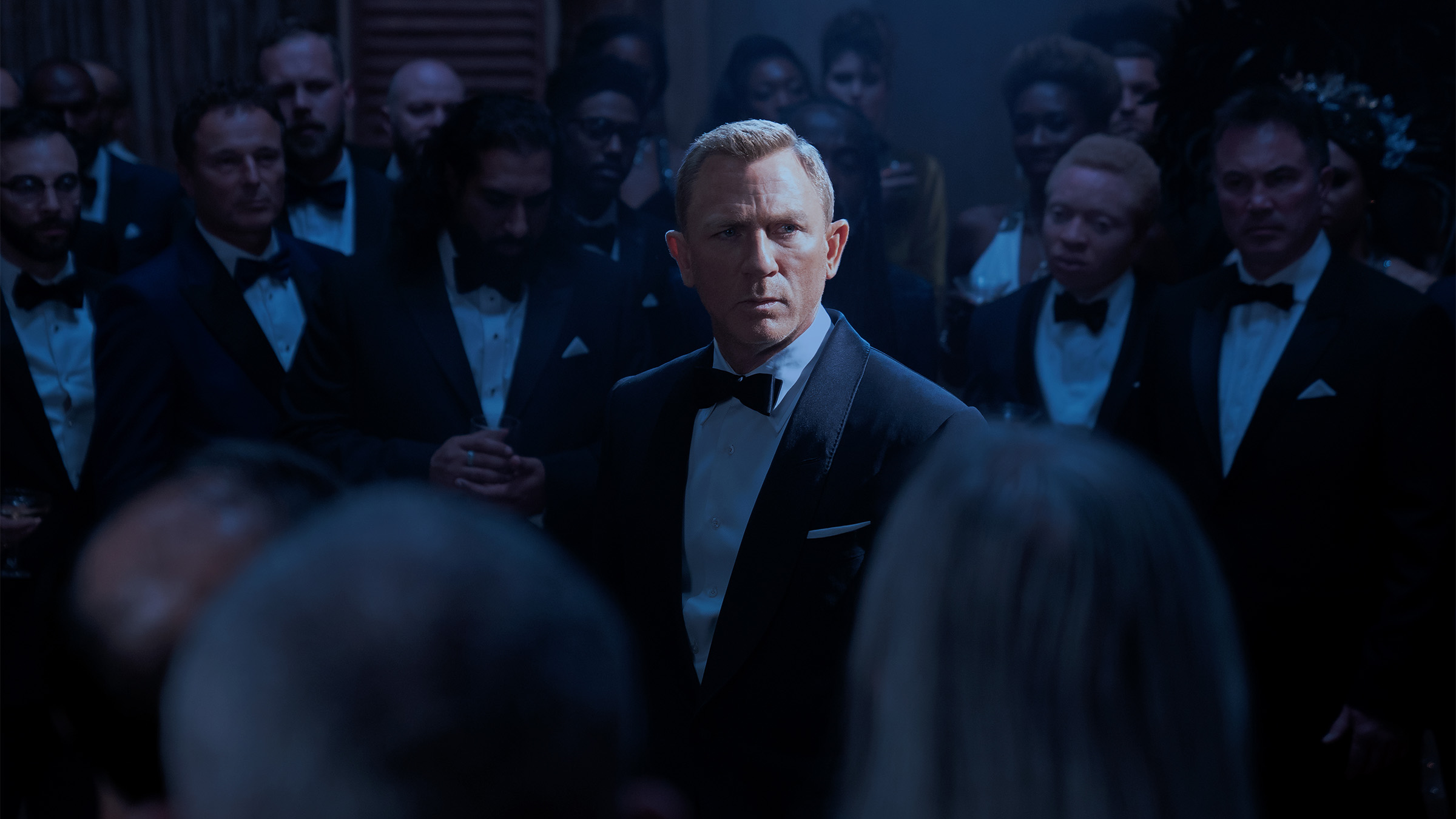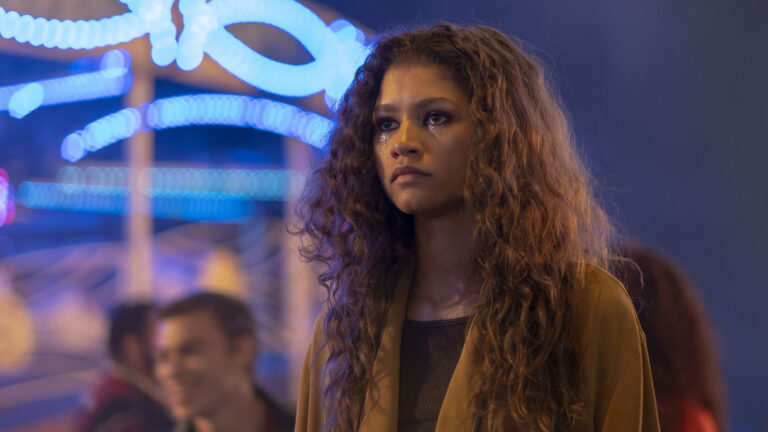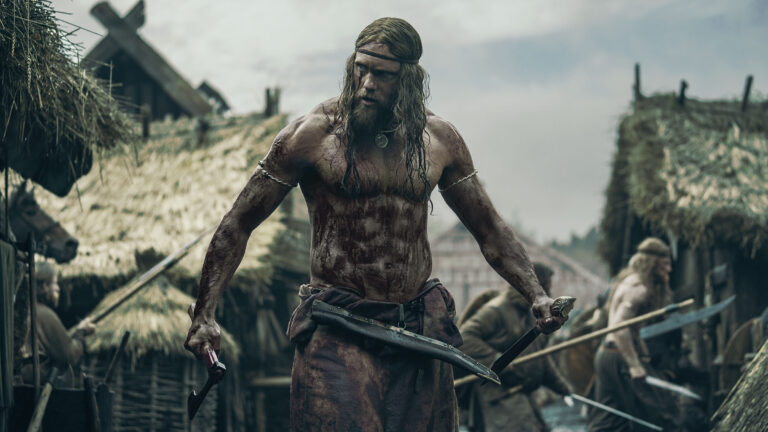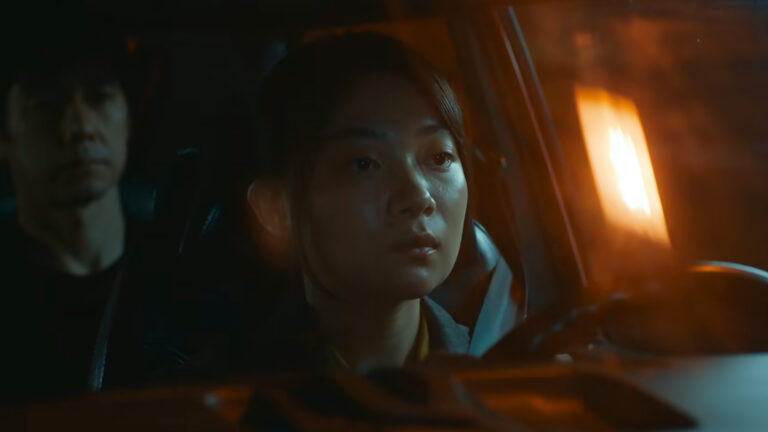Today we’re speaking with Tom Cross, ACE and Elliot Graham, ACE about the latest James Bond film—the final film of the Daniel Craig era—No Time to Die. We spoke via Zoom with Tom in LA and Elliot in London.
I just missed talking to Elliot on a previous Art of the Cut when I spoke to his co-editors on Molly’s Game, for which he was nominated for an ACE Eddie. He was also nominated for an Oscar and an ACE Eddie for his editing on Milk. In addition to those films, he cut Captain Marvel, Steve Jobs, The Amazing Spider-Man 2, Superman Returns, and X2: X-Men United. He also cut the pilot for the TV Series House.
Tom receives his Art of the Cut frequent flier card today with his fifth interview. Previously, we spoke about Joy, Hostiles, La La Land and First Man. Tom was, of course, nominated for a BAFTA and ACE Eddie and won the Oscar for Best Achievement in Film Editing for Whiplash. He also earned an ACE Eddie nomination for Joy, BAFTA and an ACE Eddie nominations for First Man, and a BAFTA nomination on La La Land, for which he won an Oscar and ACE Eddie.
Later in the piece, we’ll also be talking with Elise Anderson and Martin Corbett, who were the assistant editors for Elliot and Tom in No Time to Die. Both are very familiar with work on big-budget titles. Elise’s credits include Alien: Covenant, Fantastic Beasts, and the upcoming Ant-Man and the Wasp movie, Quantumania. And Martin has Star Wars Episode VII, Edge of Tomorrow, and Mission Impossible: Rogue Nation on his list, among others.
Listen while you read…
HULLFISH: Have you guys ever worked with this director before?
GRAHAM: I worked with Cary on a commercial in 2009, which was our first commercial. I had just done Milk, and he had just done Sin Nombre. They wanted a naturalistic approach to rebranding Levi’s at Wieden and Kennedy, and so that was an interesting experience. Then we did Beasts of No Nation together. I’m not credited on it, though. It was a bizarre choice of mine.
I did all the production in Africa, but my back had gone out twice before, once on the previous and then once again in Africa. So I finished all of Africa, but I had to pass it on to someone else, and I just felt so terrible. I’d never left the film before that. I said, give credit to whoever comes on. So we did have that production together in Africa and then Bond.
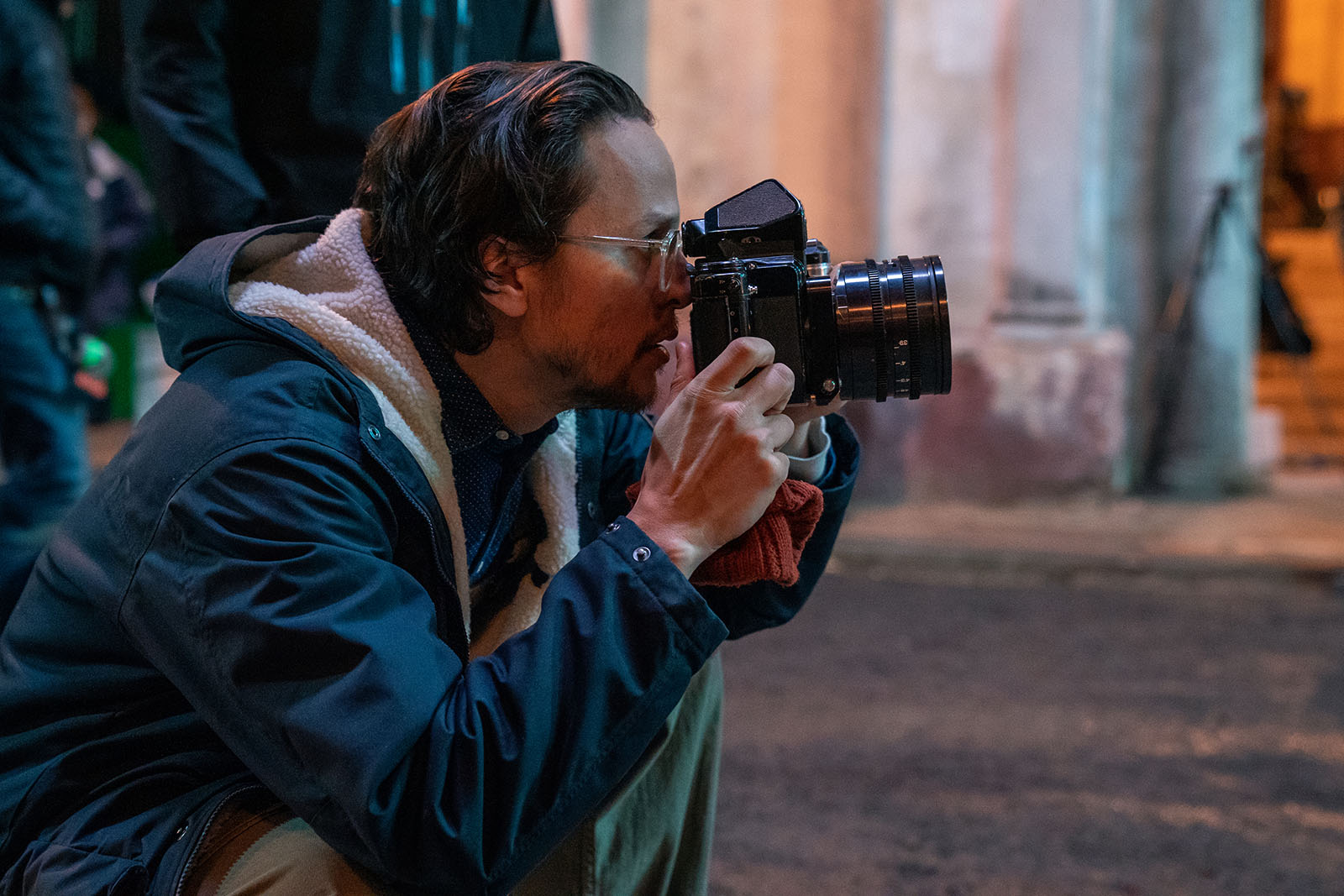
CROSS: This was the first time I worked with him. I had met Cary before at a small screening of the movie Hostiles, a Scott Cooper western that I worked on, and there were a couple of directors who Scott and producer John Lesher brought by to give some feedback, and Cary was one of them. So I had met him before but had not worked with him.
HULLFISH: Since there are two of you, how did he like to work with you as collaborators?
GRAHAM: Well, production and post are two different things. In post, he had time to spend in each of our rooms as necessary working on scenes. He could hop back and forth. In production, he was more focused on set, and we’d send him clips or show him in person, but really we worked as a team.
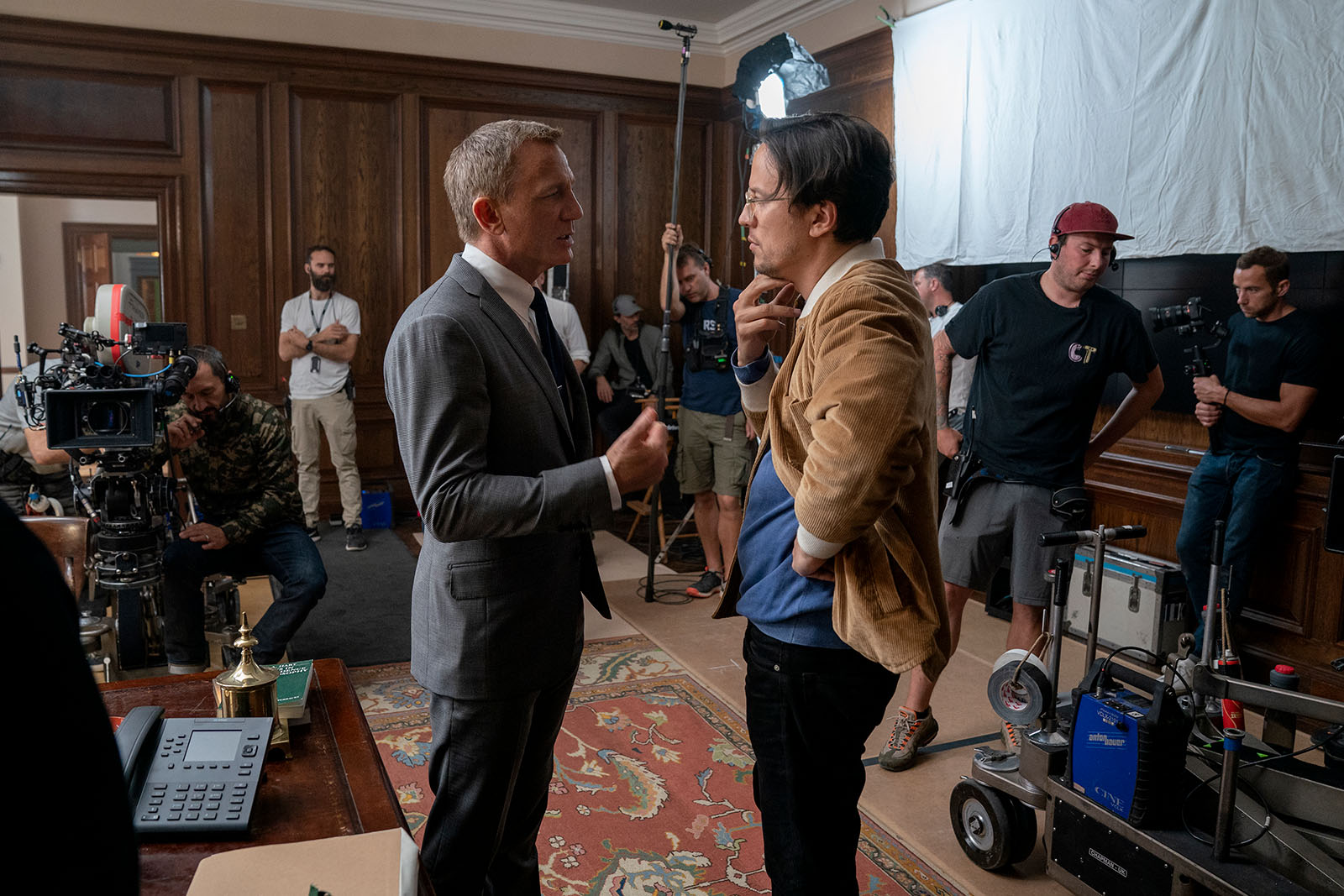
CROSS: During shooting, it was a different situation. Elliot and I took scenes as they came in and split them up to whoever was less busy. We took stuff and juggled things, so that way we’d bring cuts on a laptop to set because our cutting rooms were at Pinewood Studios, which is where a lot of the film was shot. Then, once shooting wrapped, Cary was situated with us, and he would go from room to room, giving us notes and us doing different things.
HULLFISH: What about the collaboration between the two of you?
CROSS: Elliot and I always found that, aesthetically, our styles are very closely matched. Actually, because I hadn’t worked with Cary before, I remember really wanting that support and help from Elliot. As I started showing rough cuts to Cary, I would always run them by Elliot, and that was amazing to be able to have that resource.
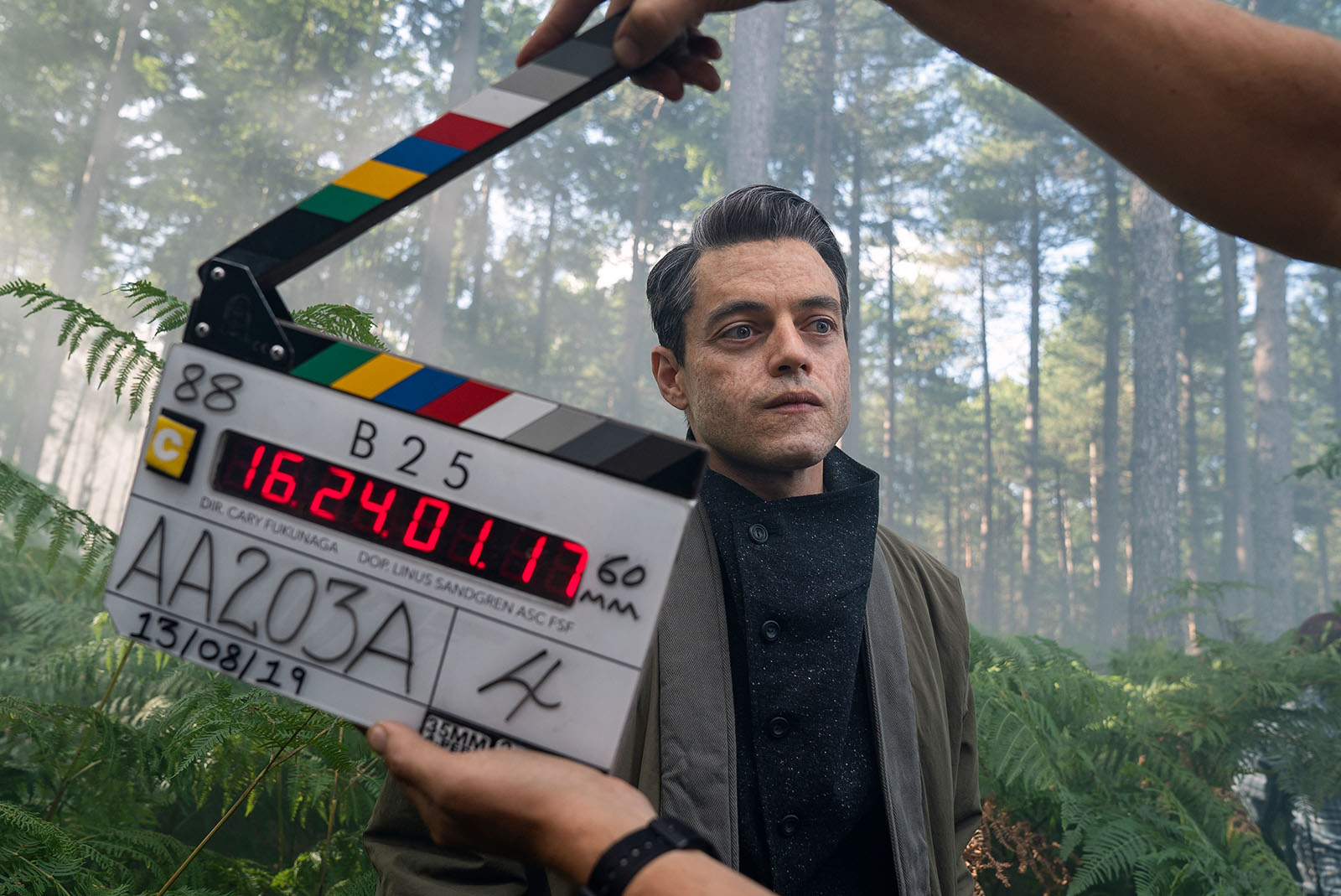
GRAHAM: It’s such a joy to have a collaborator, especially if you guys can communicate, and it’s not that it’s less work; it’s that you can spend more time on the details. That’s the joy because it’s always this race of “Do you want the best scene or do you want to be caught up to camera?” or “Do you want to have two editors and try and do both?” It’s fun to work on drama, it’s fun to work on action, and it’s fun to bring them together. It’s fun to do it with somebody else who knows that.
It’s fun to work on drama, it’s fun to work on action, and it’s fun to bring them together.
CROSS: We both did a little bit of everything. We both did action things, we both did serious performance drama things. We both basically had a sampling of everything that you see in the movie.
What’s amazing is that I always knew that if I was cutting a fight scene, I wanted to show it to Elliot because I knew that with his amazing work, he had done things like that and likewise, if I was putting a simple dialogue scene, I would also want to run it by Elliot because his work contains beautifully cut performances.
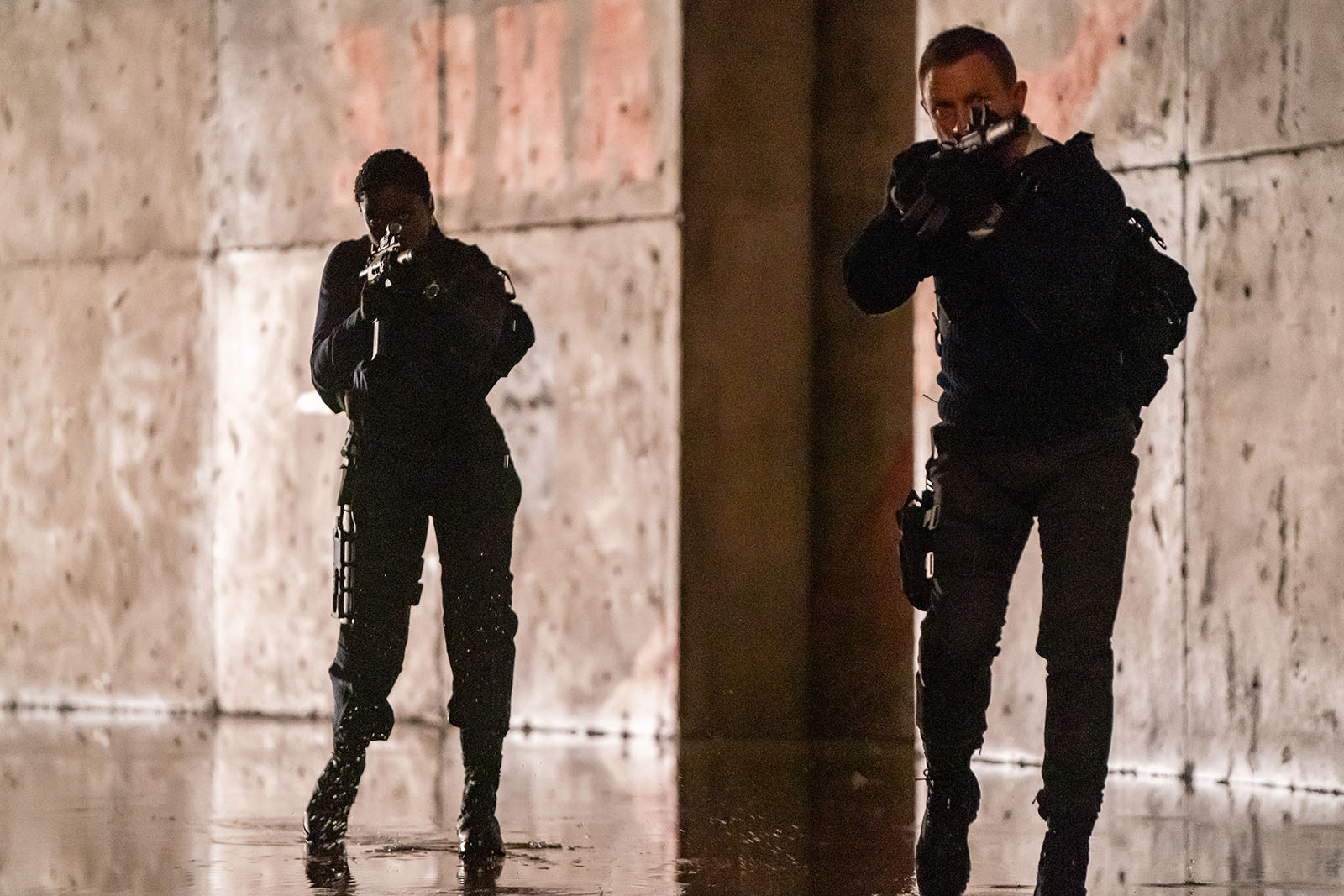
GRAHAM: He is being very nice, but it went both ways, and that was the joy in it. It was this conversation we had early on, in which we agreed to share our stuff. It’s one voice, and ultimately, if you want to be honest, it’s Cary’s voice. I think, in part, that we were hired because we have such eclectic resumes and because Cary’s work is as eclectic as this movie.
HULLFISH: Talk to me a little bit about that sense of knowing a director more than just knowing what the footage is saying to you.
GRAHAM: Cary’s always so focused on story and character. Kinetic energy is something he knows how to do. It’s easy for him. Visuals are a gift he is born with, as is storytelling, but that’s where he’s focused the story and the character. Our first project was a Levi’s commercial in which there were basically six or seven stories to fit into one minute thirty seconds. We couldn’t do it, but we really cut the two-minute version first to go, “What is the emotion? It doesn’t matter if it’s commercial. What’s the emotion?” and then figure out what we should sacrifice.

CROSS: Yeah. He likes to see different versions so that he can see what the film could be. Great directors don’t want to just see what is planned, although he certainly plans; they want to see all the possibilities, then we figure out what it is.
Great directors don’t want to just see what is planned…they want to see all the possibilities, then we figure out what it is.
HULLFISH: Did you guys do that often? Cut multiple versions of a scene?
CROSS: We did do multiple versions of scenes, and we did that right from the beginning. For me, not having worked with Cary before that was a little bit of a new process. At first, it felt like it was counterintuitive because, as an editor, I’m so used to making my first impression choices and then trying to stick to them. However, Cary really pushed us to show different versions, not just the same scene with an ending that’s different. He wanted to see big alternatives, and it forced me to almost drop my preconceived notions about what I think the scene should be and try something completely different, to try a different approach.
A simple example would be that I think it’s more powerful to play this dialogue scene from the frontal singles. I think the performance where we see the faces and the eyes, that’s my first gut impression. However, I’m going to do this other version where I’m going to use this other coverage that is only profile, which is more of a graphic thing. It’s less about looking directly into the eyes, and it might not be the first thing that I think about, but once I do that other version, I start seeing possibilities that I didn’t notice before.
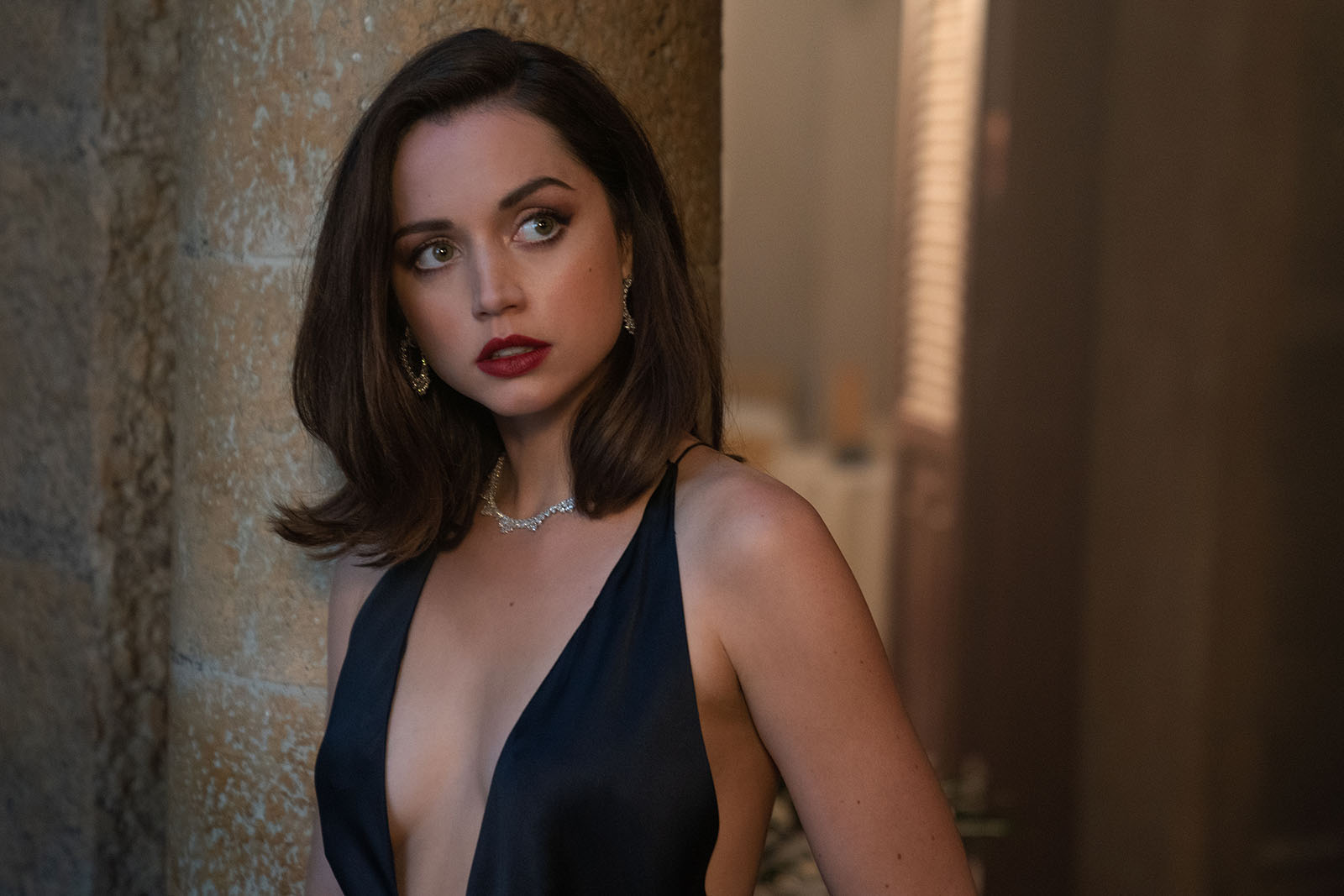
That’s a big part of this collaboration with Cary; he wants that feeling, he wants to kick the tires on all the scenes, and he wants to see what’s possible. He wants to get a feeling for the outer edges of the coverage and what the choices are, and you never arrive at, “Oh, this version is the best one.” It’s always a hybrid of certain things, but by the end of it, I actually found it a really fruitful, interesting process. It’s one I actually have taken with me into other projects since.
Your brain is always progressing; it’s always evolving as you’re cutting with this different coverage. What I found is that often it sheds light on things that I wouldn’t have thought about before.
GRAHAM: Cary’s a man of few words. And like I’ve said to Tom before, he’s got 17 paragraphs of genius in his head, but he’s not going to give them all to you, which is either a gift or frustrating, but really it’s a gift because if you go do your thing, you’ll eventually get to those 17 paragraphs of genius. There’s lots of opportunity with him. I like opportunity.
He’s got 17 paragraphs of genius in his head, but he’s not going to give them all to you, which is either a gift or frustrating.
I started doing this thing a couple of years ago that I learned from another director after I finished a scene, and everybody’s approved it, and everybody likes it. So it’s a bit dangerous. I cover up the monitor, and just by looking at the timeline, you can toggle between different angles. I would toss in other angles that I liked that hadn’t been used in the scene randomly. You don’t know exactly where you’re dropping them because you’re just looking at a timeline.
After doing that, you watch the scene, and it’s completely incoherent, but sometimes you find these happy accidents. That was my version of trying to figure out what’s the “outside” of outside the box. We add a little chaos, and what you find is mostly just chaos, but every now and then, there’s something nobody ever would have thought of.
CROSS: When I think about presenting a first rough cut to a director, especially one you haven’t worked with before, I think of something that’s very stressful because you’re pitching something, and you want it to go over well. You want to know that your first cut was right or that you’re on the right track.
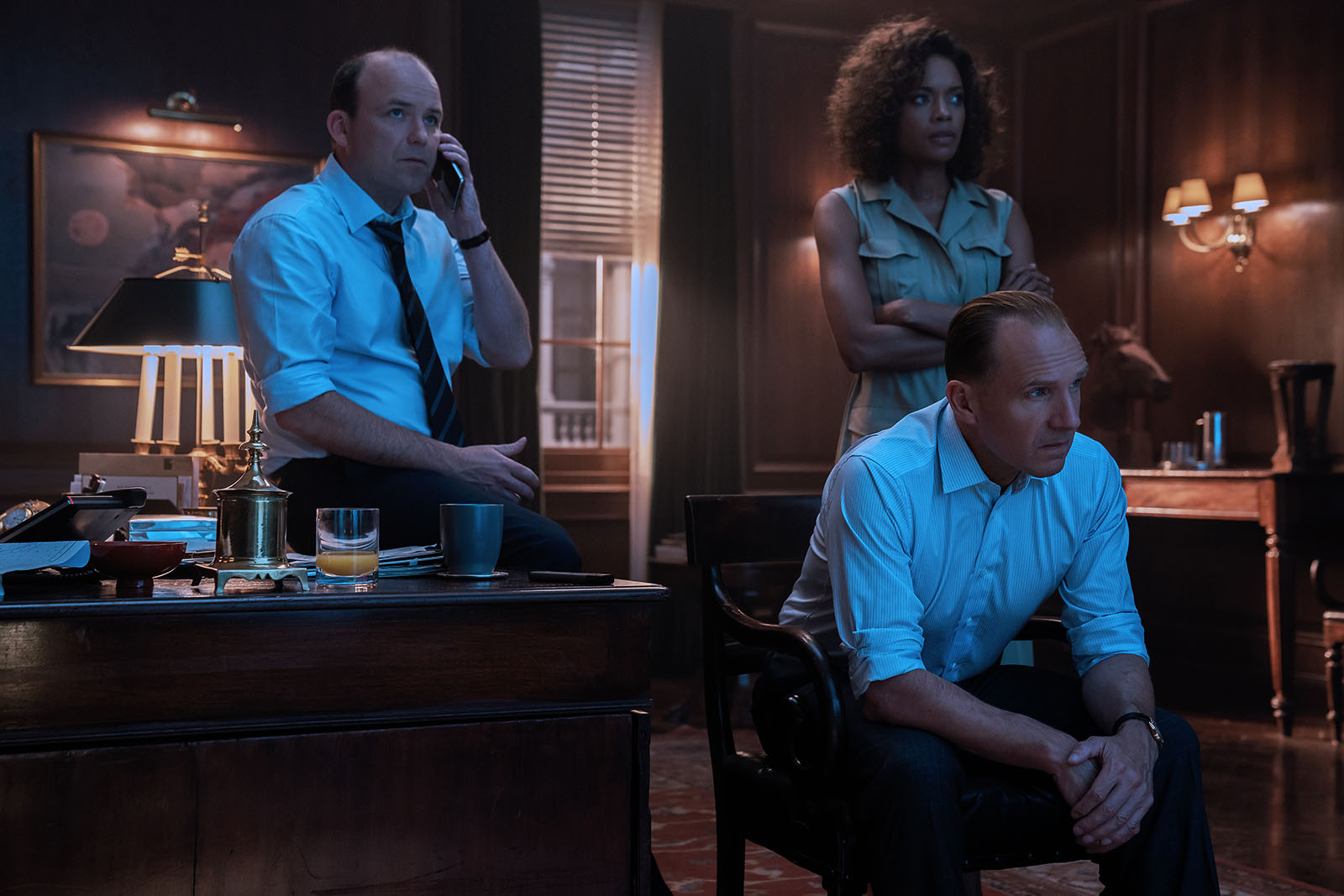
At worst, you don’t want to pitch it and then be rejected, and then you get fired, or someone loses faith in you, but I think what was great about the way Cary liked to work with us is that by pushing us to do these alternatives, it took the preciousness out of that first cut and by default, it basically was sending a message to us that said, “Take a swing. I don’t care if you strike out or you hit it out of the park; you’re going to do neither of those with these early cuts.” He gave us license to take swings, and that’s something that’s really valuable.
HULLFISH: Did you guys have to deal with a lot of stunt-vis or pre-vis before the movie at all?
CROSS: Yeah, we were consulted early on, and I remember there was plenty of pre-vis and stunt-vis during the middle of production because there was a lot of stuff that was still evolving script-wise. A lot of that had to do with schedules being juggled around and reshuffled. A lot of that had to do with Daniel Craig’s ankle injury, which meant that Cary could not shoot certain sequences the way he originally planned.
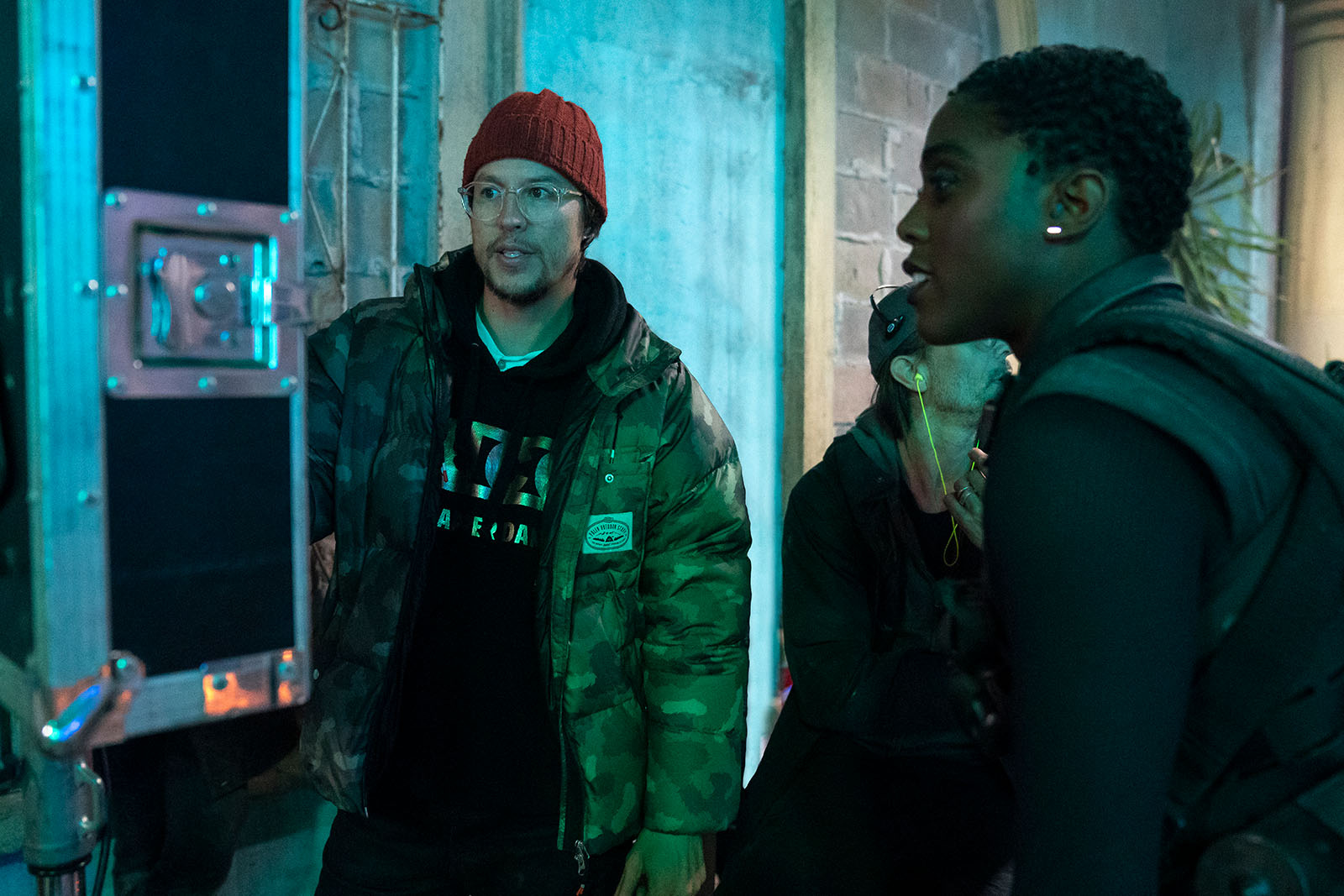
For example, the big Cuba action sequence, he had originally planned it to be some form of a oner, but because of his ankle and recovery time, they had to shuffle things around and start shooting other things first and, in some cases, shoot second unit action first on the Cuba set at Pinewood. That necessitated a different architecture cinematically for that action sequence. It meant that some second unit was shot first and that there were sequences that could be built with those pieces, but then the rest had to be filled out with pre-vis, post-vis, and stunt-vis, and that was an ongoing process for months. So it wasn’t just in pre-pro. We had all that stuff during shooting.
GRAHAM: Including having some of our assistant editors and us going up and being stuntmen with our brilliant French badass ex-special ops stunt supervisor. That was fun but also challenging.
HULLFISH: Wait. You guys got to do stunts?!
GRAHAM: We had a couple of assistant editors for the Cuba sequence, which was shot because of the injury. Daniel was shot at one time, Ana De Armas was shot at another time, the villains were shot at different times, and then we came back to wrap them all up in a package. We would go up with an assistant editor and an iPhone and some of his stuntmen and go, “Okay, it could be this shot, all right, let’s try that!” We’re not jumping off the sides of buildings, but we’re trying to provide Cary with a template of what is possible and what kind of connective tissue there was so that he could present it to Daniel.
Daniel, by the way, gives everything he has at every moment; therefore, limit what you give him so that he doesn’t break himself. You need him to be able to give everything because he gives everything. We need to know what we’re shooting, Cary needs to know what we are shooting at, and he’s always going to wing it and make it his own, but our job was to build creative, connective tissue for them.
That’s the thing about editing that people don’t understand. It’s not just being alone in a room with a computer.
That’s the thing about editing that people don’t understand. It’s not just being alone in a room with a computer, you get to work with all these people, and that’s the fun of it.
HULLFISH: Did you even try to edit stuff when you were getting things so piecemeal like that?
CROSS: You had to because there were often questions about what he had so far and what it is we still need to get. A hallmark of Bond movies since the early days is having multiple units shooting at the same time. Stunt shooting, action shooting, establishing shots all around the world, that’s the only way that these large movies can get done is constantly moving and constantly gathering footage.
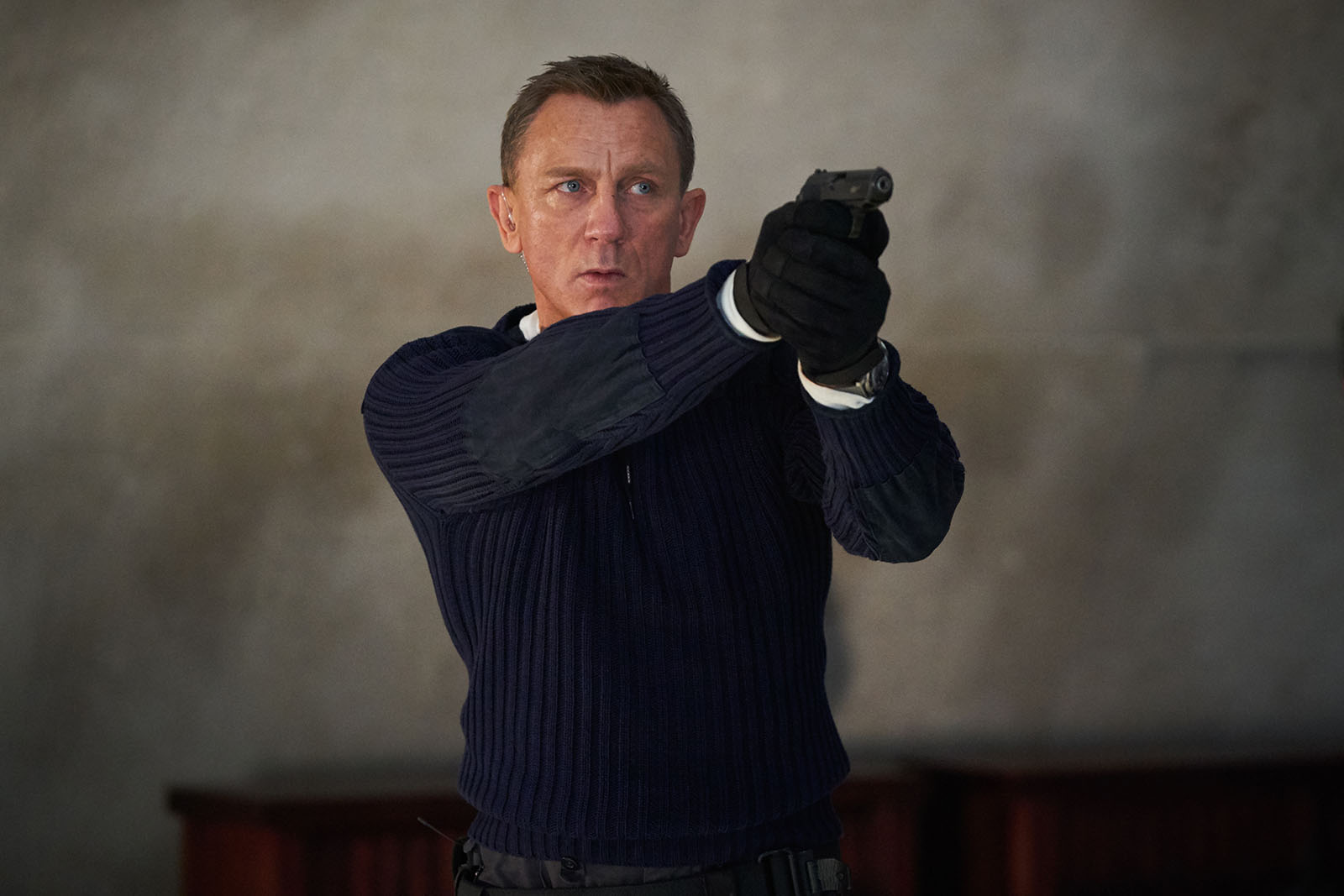
GRAHAM: You either love it, or you hate it, but either way, you have got to embrace it. It’s like an amusement park ride.
CROSS: In some cases, we would get the video tap to cut; it was all about getting fast results. I remember getting some stuff in for Matera, Italy where we would get the video tap footage in first, which always looked awful, but we would try to cut the sequence with that.
Often we would show stuff to Cary, like video tap silent, just to give them an idea of what pieces we had. We put little placeholders where stuff was going to be, or if there was an animatic, we’d place that in and fill in whatever little holes we could. It was all about trying to present a map that would constantly and quickly be updated as they shot more material.
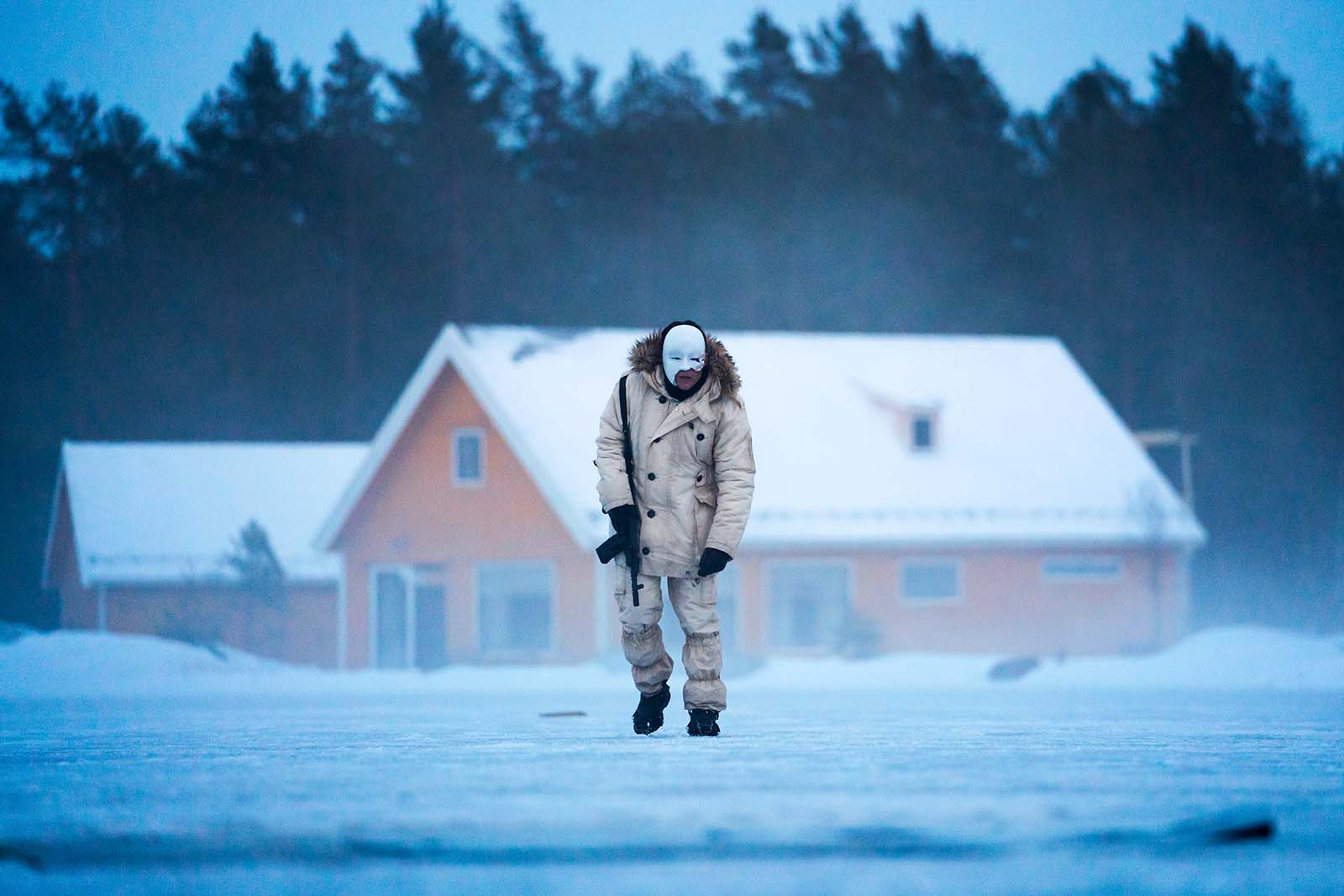
GRAHAM: Different editors have different perspectives; there’s no right or wrong. It’s just your own personal personality. Do I hate production? No, I just really love editing. I much more enjoy post-production because there is simply the race between quality and setting up the camera, and you can’t give both a hundred percent. It’s not possible. I enjoy post more only in that I get to work on the perfectionist side of things, which I like.
Do I hate production? No, I just really love editing.
In production, you have to embrace a different kind of rush. You’re not going to make the best edits possible. You do what you can because your ultimate job is to make sure you’re getting the material you need.
CROSS: We’re all editors, so we know how many thousands of decisions have to be made, and your batting average, even when it’s good, means that you’re going to be making tons of decisions that you’re going to have to change later and by later I mean after shooting stops and the director can come in and work with you.

I actually get worried when those changes happen less. Most of the time, that doesn’t happen; things do change, but I want it to change because the joy of this for me is collaborating. So I don’t want to be left with my first rough cut. I want Elliot to kick the tires on it. I want Cary to kick the tires on it. Let’s break it open to make it even better than we all originally envisioned.
Let’s break it open to make it even better than we all originally envisioned.
HULLFISH: Talk to me about the move from cutting during dailies to cutting in post and your first assembly where you’re actually working with the director, and you are now seeing the context of what you’ve done.
CROSS: You’re lucky if you are working on a film that has amazing set pieces that you really love, great scenes, whether action or dramatic, that you really love, and the goal is to try to get to those scenes as quickly as possible. What are those bumps in the movie? Where are they? Where are those important bumps? And how can we get to them in an efficient manner?
HULLFISH: What was one of the big points that you’re trying to get to in this movie? Like what was the moment you thought, “We need to get to this moment sooner”?
CROSS: I think we had different milestones along the way. Our challenge started at the very beginning because every Bond movie is big. Every Bond movie is epic. What’s different about this movie is not only is it epic, but we have an added aspect of time.
Our challenge started at the very beginning because every Bond movie is big. Every Bond movie is epic.
We’re telling a story that’s epic in time, not just visually, not just cinematically, but it’s a Bond story with three time periods, which hasn’t been done before. We always knew out of the gate that the pre-title teaser was going to be longer than previous Bond movies, and in fact, it is the longest pre-title teaser in Bond history.
We had to start with Madeleine as a young girl, and then we had to go to Bond and Madeleine, which takes place just after Spectre. Then after the pre-title sequence, we pick up five years later.
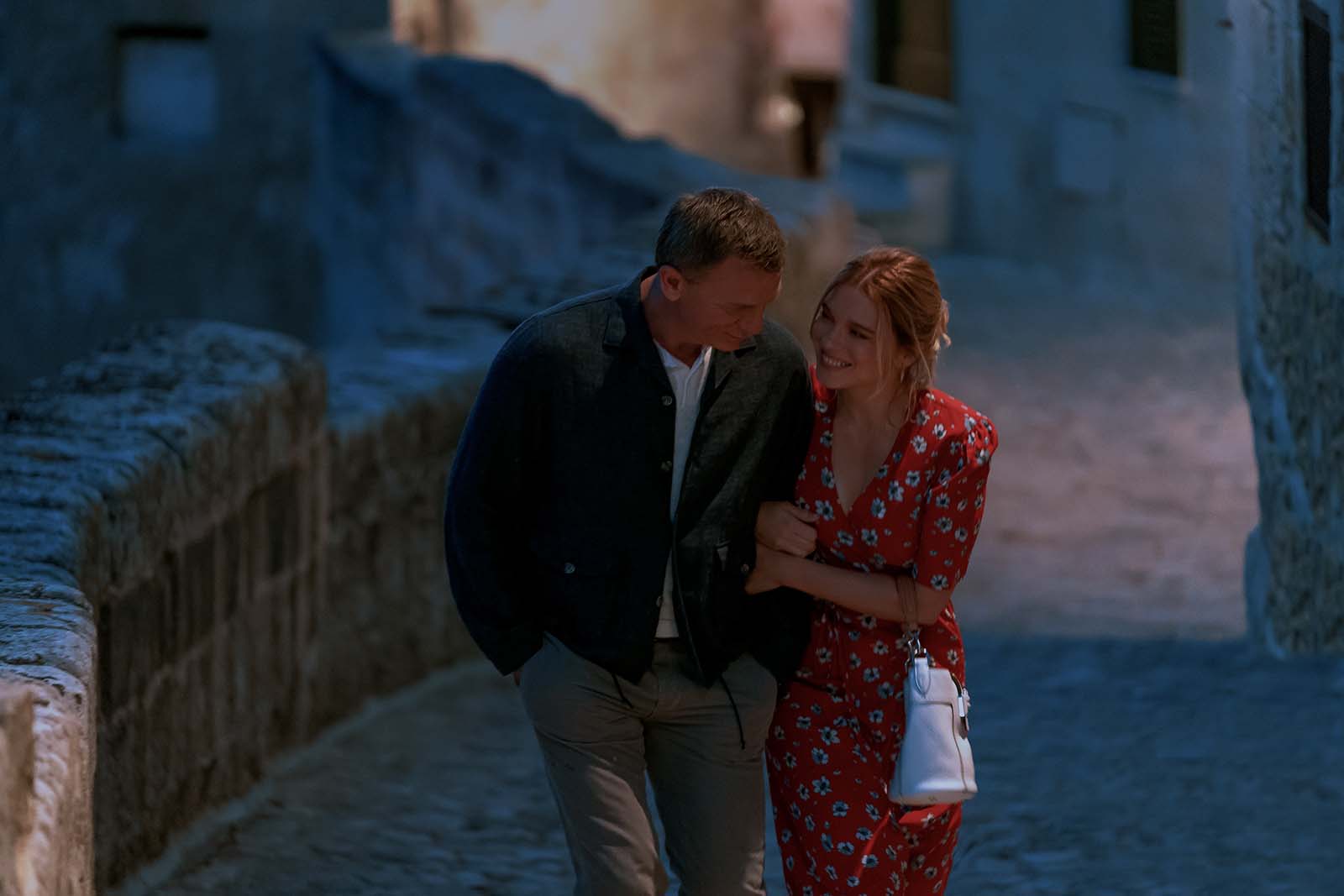
We always knew that was going to take a certain amount of running time. So the trick was, “How can we cover those bases and honor that part of the story, but how can we get to it quickly?”
HULLFISH: Did things not change much structurally? Was there room for things to change?
CROSS: In the third act, we did shuffling things around. We shuffled a lot of scenes with M, Tanner, Moneypenny, and Q. Those sequences were moved around to suit the story.
GRAHAM: We had to pay attention to the opening and closing because we were shooting them simultaneously. We had to pay attention to what details we needed to make sure we nailed it in the third act, which is the most important thing. So we had two of the most important things happening at the exact same time. It was interesting and fun.
CROSS: Some of the most important scenes in that pre-title teaser take place in Matera, Italy and Cary wanted us both there on location to help support while they were shooting. However, both Elliot and I realized that a lot of important storytelling stuff was also coming up when we finished this area. A lot of plot-related stuff with Heracles and what that means and how that affects people. So we had to start focusing on cutting those exposition scenes, as they were very graphics and visual effects-heavy scenes. We ended up moving a lot of that stuff around.
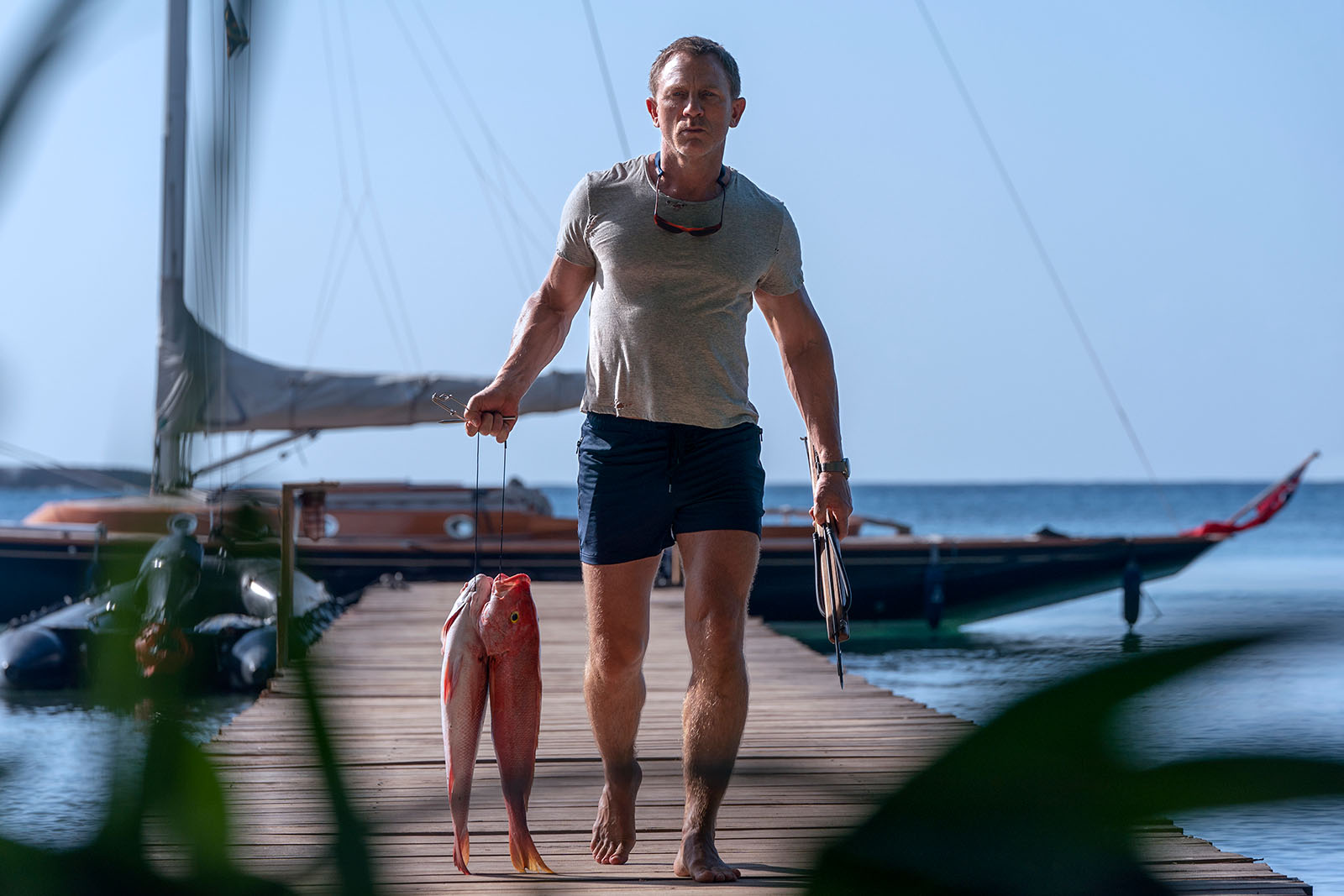
HULLFISH: What do you think the advantage of having you two on set was? Why did you need to be in Italy, and what was the value to the Director?
GRAHAM: It was Matera, Italy. Nowhere looks like Matera Italy. We had to really get the footage we needed while we were there, and Cary needs to know that it was working so we could pick up shots immediately as needed.
We’re about to shoot the ending of the movie, so there is a certain level of scripting that goes into that. That’s part of our job. I may not write the lines, but we help connect the dots so that Cary can work with a writer and express it better. It was really interesting on this film connecting the beginning and the ending at the same time.
HULLFISH: Did you guys feel like you needed to watch the other Bond movies to get in that headspace?
CROSS: We both re-watched all of Daniel Craig’s movies and what we quickly found out was that obviously, when you work on a Bond movie, in a sense, you want to honor everything that’s come before, but more specifically, we wanted to make sure that we were going to tie up Daniel Craig’s arc as James Bond.
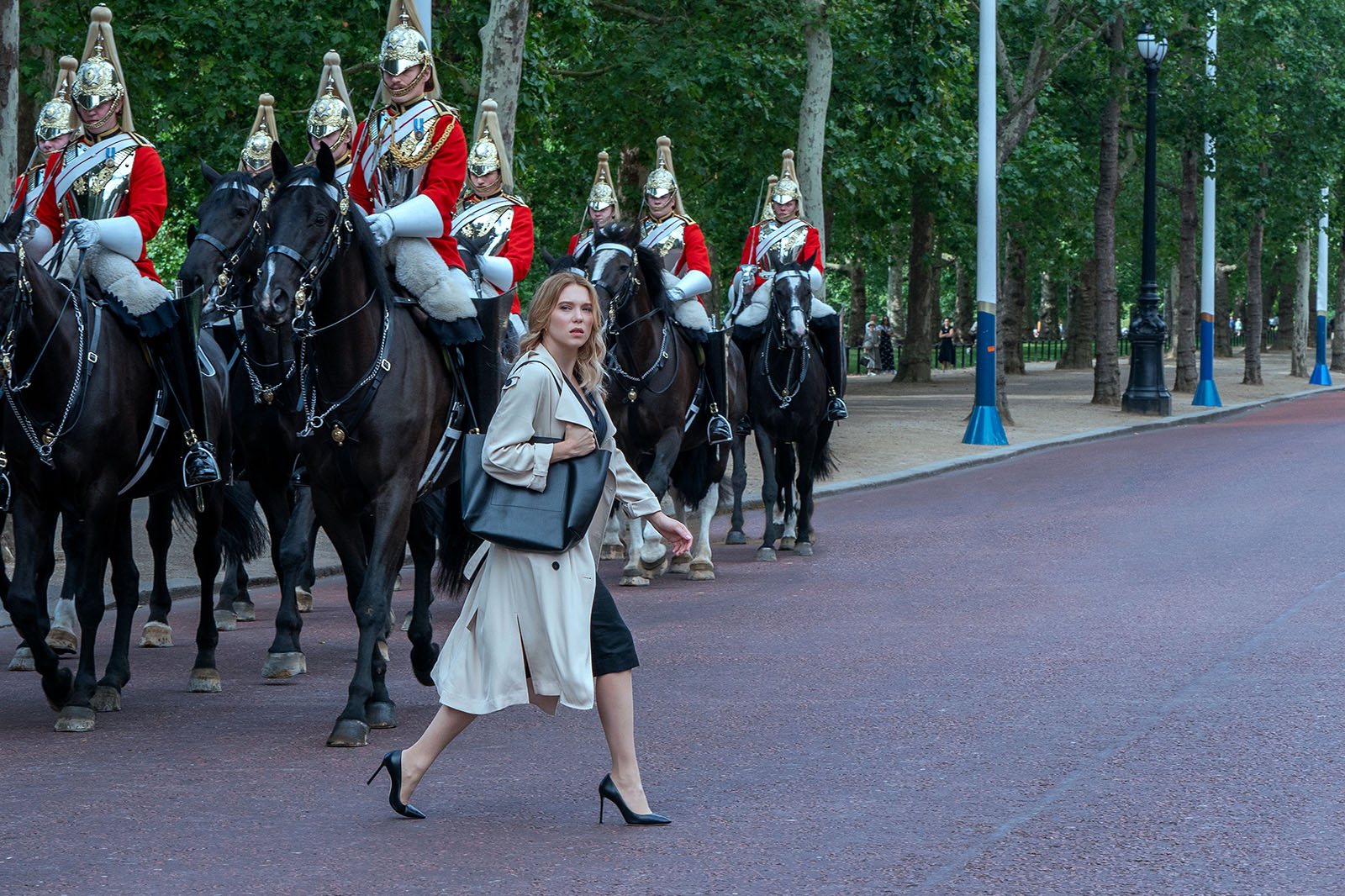
We focused specifically on the four films that preceded us. So both Elliot and I asked our assistant editors to get those four films and put them in the Avid; we actually got them to put split tracks in the Avid because, in some cases, we were temping with music and sound effects from the previous Bond movies.
We did this to get going with just a rough cut, but we definitely looked at Casino Royale, Quantum of Solace, Skyfall, and Spectre because there was something from all those movies that was interesting and we wanted to work with.
GRAHAM: I think we came in with a respect to Daniel Craig’s tenure, and he’s been spectacular, and he deserves for it to land brilliantly. So to Barbara [Brocolli, producer] and the family who puts so much into this, there was a responsibility in a way that was different from the other films.

HULLFISH: Tell me a little bit about temping. Did you feel like you needed to temp outside of the Bond universe?
GRAHAM: It’s a dance between sound, music, and picture. Some say picture is the only thing that matters and to make sure your sound and music matches it, except for the fact that if you toss a different piece of music on the picture, it might be that you can cut it entirely differently. It might be better, it might be worse but what’s important is that it changes it.
So our exploration went from recent Bond music to 1960s and 1970s Bond music to even a Hans Zimmer combination of the two. We were trying to give it a new life, and Cary was trying to do that via us. There was a point where we were taking home music from other movies and combining it with the ’60s and ’70s music, literally having different stems and tracks of different pieces of music on top of each other in the same scene, old Bond movies as well as current. We were trying to find something fresh, but that also helped dictate how we cut it.
CROSS: That was something that was very refreshing and challenging with what Cary wanted musically for this film. He was allergic to spy genre music and anything that was conventional or would be considered more traditional. He wanted us to think outside of the box, which included dabbling in John Barry’s original Bond scores from On Her Majesty’s Secret Service, and we used stuff from Thunderball and different tracks from the ’60s.
It was amazing to be given that license to try things outside of the box. He really was pushing us to not settle for something that was just what you’d expect. So Elliot and I would try really crazy things sometimes, things that you wouldn’t necessarily think of, and that ended up being our temp, and that informed what Hans ended up doing later.
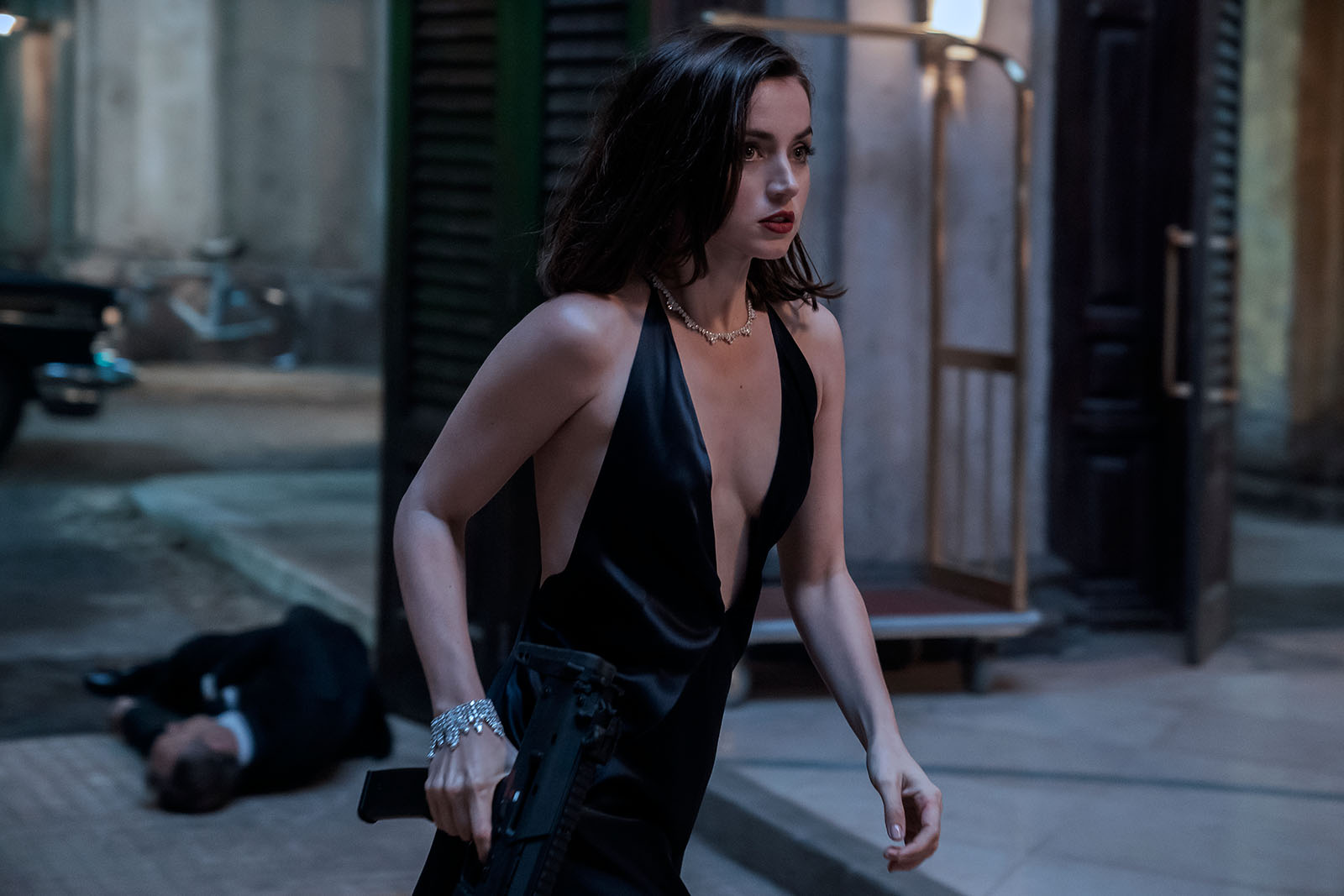
Elliot and I also told the assistants to bring in every single soundtrack from every Bond movie, from every Eon-produced Bond movie, so we would pick and choose from that. Even though we were thinking outside of the box, having those classic James Bond themes is like owning a Picasso. That’s not something you just discard. It’s too valuable to do that. So a lot of the fun is finding a place for the theme to show itself.
Even though we were thinking outside of the box, having those classic James Bond themes is like owning a Picasso.
GRAHAM: There’s a moment where he kind of becomes 007 again to the audience, after the Cuba sequence and he goes back to London and opens up his garage with the Aston Martin and all his suits, which he hasn’t worn up to that point and really, he’s Bond again. So, of course, yeah, we’ll use a little of the Bond theme for that. We were very careful about when we use it, but there were moments where we were pulling from the ’60s and ’70s and Hans and also combining all of it.
HULLFISH: A classic aspect of the Bond movies is the gorgeous locations and incredible set designs and production. What was that like to edit with such incredible shots? Was it a struggle to not always want to stay wide and show it off?
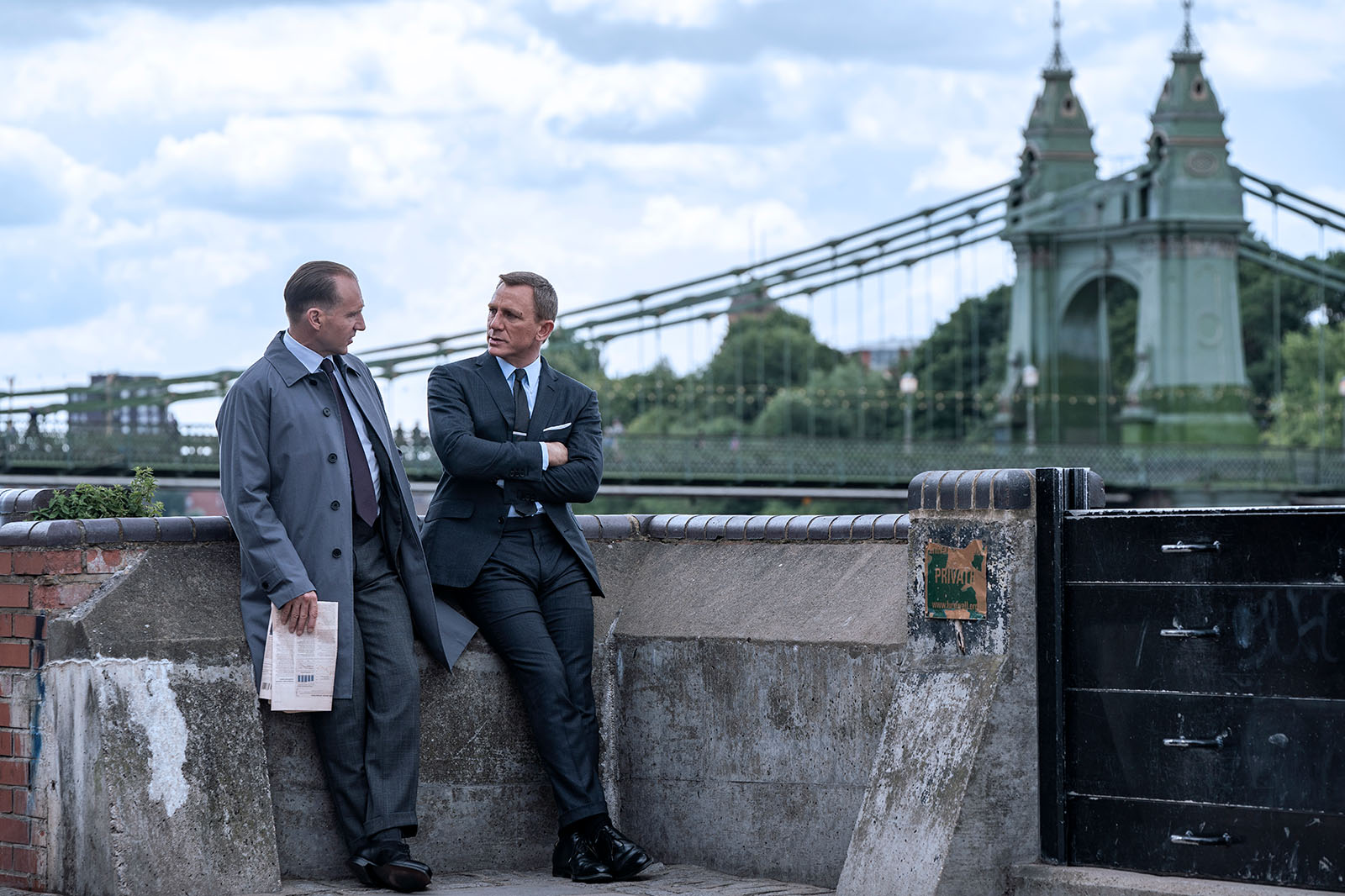
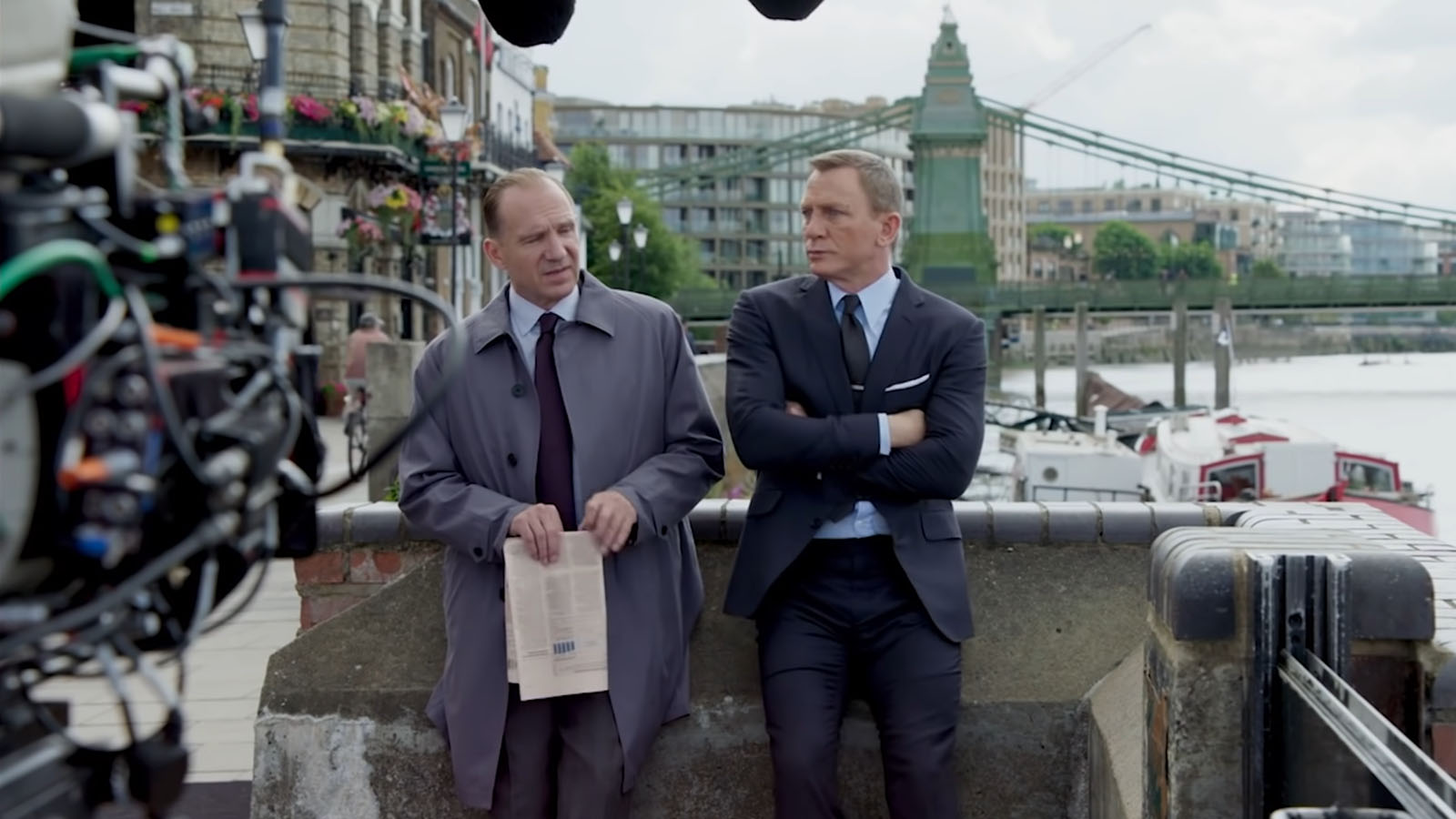
CROSS: By the footage we were getting, the way it was shot, and the design, we were invited to use those wide shots. So there’s plenty of scenes in the film where you really wanted to stay in a wide shot because it featured some amazing set that was designed, and you’ll see this all over the movie, but absolutely in the third act of the movie, when we get to Safin’s lair, it’s very reminiscent of Ken Adam’s sets in the early Sean Connery movies. But at the same time, the production designer for No Time To Die, Mark Tildesley, is so brilliant. He’s made these sets his own, so they really feel like they’re functional, and they feel new, but there’s a little wink to those older films.
Sets affect editing. People don’t quite get that.
GRAHAM: We are here to talk about editing and, to a certain extent, how we work with Cary, but the truth is we get to interact with everybody. That’s part of our job and one of the joys of our job; even production designers and people don’t quite understand that Mark Tildesley is a genius at production design, and it does affect editing. Sets affect editing. People don’t quite get that.
It’s not just showing off what they created and then going in for the performance. It’s as though there’s a natural connection between the storytelling of the production designer and the storytelling of the editor. So when we’re talking about Mark Tildesley and his genius, it matters to us.

CROSS: Absolutely, and when we think of Bond, you have to think of the Bond franchise and its extensive world-building from the very beginning, which really created its own style and genre.
We, as editors, are continuing to build and maintain this James Bond world, and a great way for us to help build that world is through these amazing locations and these amazing sets. Whether it’s a real location like Matera, Italy, or something designed by Mark Tildesley, they are things that inspired it to be shot a certain way, and that helped inform us in our editing.
HULLFISH: Is it just a factor of directing, or are fight scenes different in a Bond movie than, say, something like John Wick?
CROSS: I think it is director-dependent. That being said, it’s also editor-dependent too, but I learned early from the supervising stunt coordinator, Olivier, that Daniel Craig likes to have his fight scenes as visceral and as ferocious as possible. Daniel doesn’t like to do extended choreography because he sees it as feeling too choreographed and tired.
Daniel likes to give 150%, and because of how ferocious he wants to be, they tend to shoot little pieces where Daniel will execute one or two moves but be able to execute them perfectly and with the most amount of energy and intensity he can.
GRAHAM: Daniel gives 150% on everything he does, period, that includes the drama scenes, the action scenes, every scene. He’s not giving a performance as James Bond; he’s giving a performance as a human being, as James Bond, and our job was essentially to protect him.
HULLFISH: Gentlemen, thank you so much for your time. I know you have got to go and I really appreciate you.
CROSS: Steve, always a pleasure. Thank you so much.
Now we cut to the second part of this interview, featuring Elise Anderson and Martin Corbett, who were the assistant editors for Elliot and Tom, respectively.
ANDERSON: I’m Elise Anderson, and I was one of the first assistant editors on No Time To Die.
CORBETT: My name is Martin Corbett.
HULLFISH: Did you guys both assist a specific editor on the film?
ANDERSON: I was the assistant to Elliot, and Martin was the assistant to Tom. Although obviously we became a bit of a foursome and we collaborated together.
HULLFISH: Did you prep not knowing who a specific scene was for?
CORBETT: Sometimes, yes. There was a slight delay in getting dailies, especially at the beginning with location works, so sometimes we wouldn’t know, but then we’d find out.
ANDERSON: Martin and I started at the very beginning when we did the pre-shoot, the Norway shoot. We started with the editors, but the remainder of the editorial team didn’t start until the beginning of principal photography. The beauty of that beginning time allowed us to really get to know Elliot and Tom and really pinpoint the workflows, and obviously, that can change as you go along and you adapt.
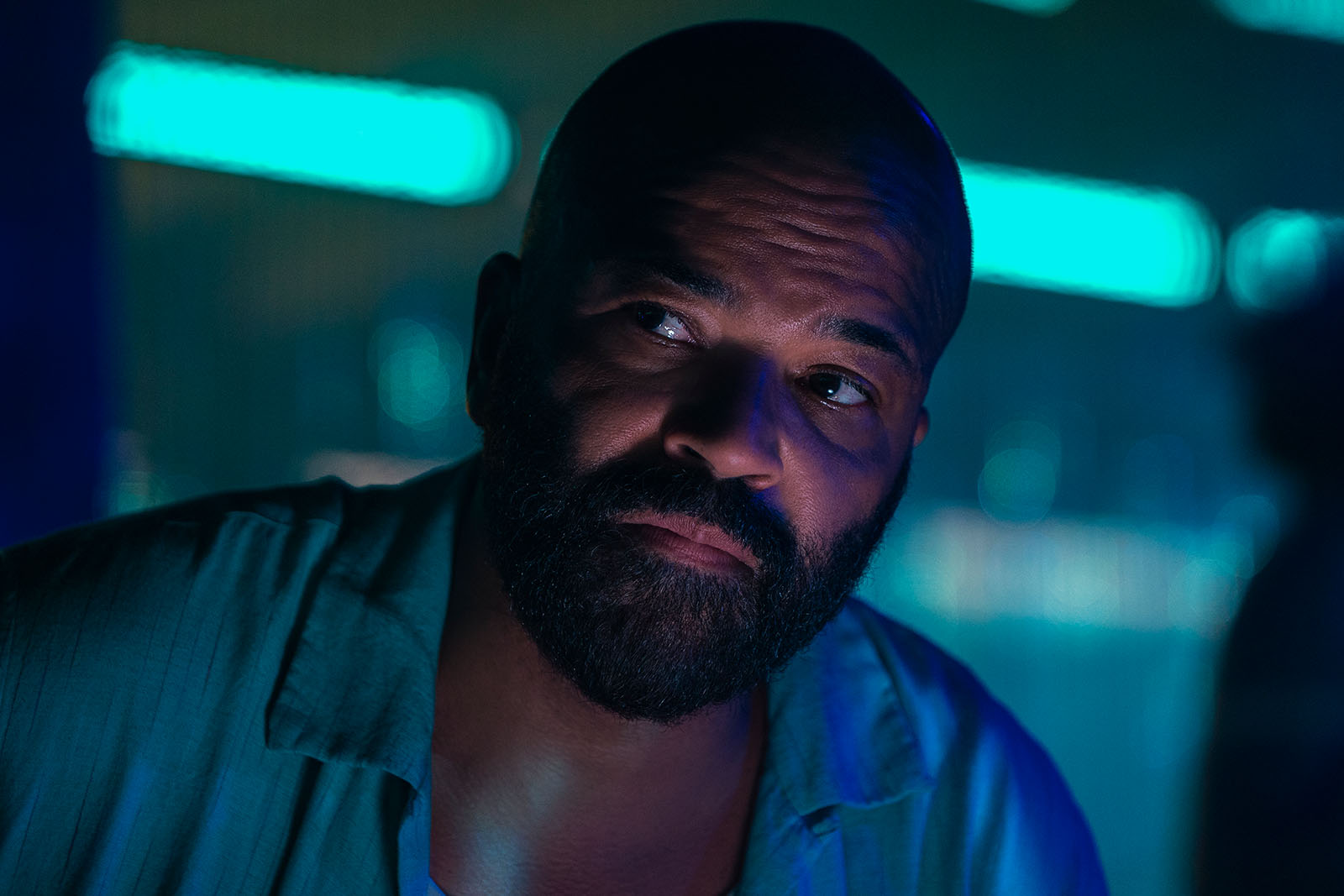
It really gave us that time to figure out a few of the basics and the basis of how we were going to prep the scene on a daily basis. So even though they did cover different scenes, we had a general idea of how we were going to prep them, and then when it became clear which editor was going to do what, we would start tailoring them more specifically for that editor.
HULLFISH: Let’s say you’ve got a generic bin that you’ve prepped dailies for, and you know it’s for Tom Cross; what did you have to do differently for a bin for Elliot?
CORBETT: I didn’t really have to do anything differently. There were just a few instances, but there was a lot of information that went into the bin. So between having chats with both of them, we would include all of the continuity notes and as much information as we could we would get into the bins.
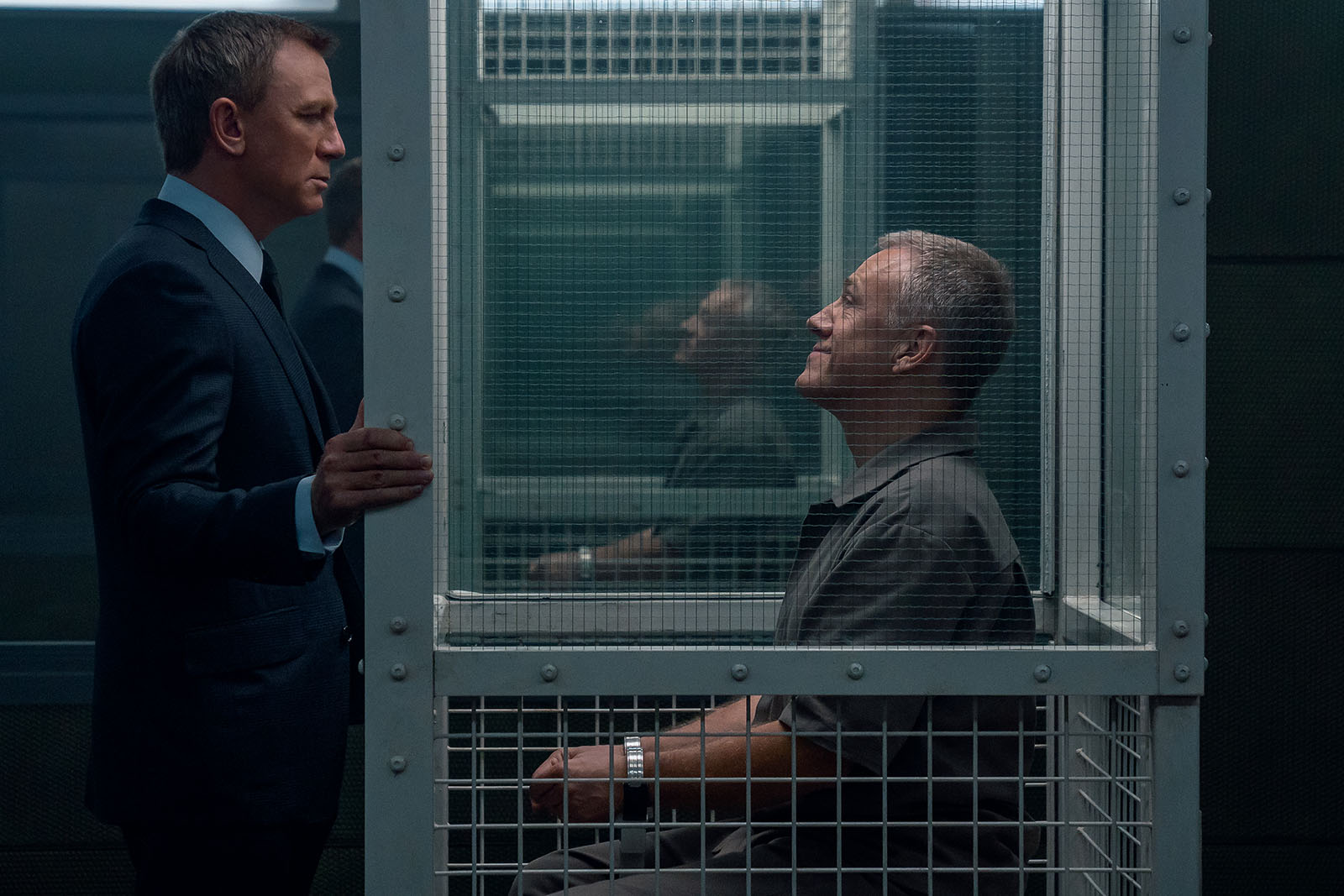
For some scenes, it would just need to be organized in a slightly different order. A lot of the time in the film, the second unit would shoot prior to the main unit. So then we’d have all the second unit footage and the main unit footage, then we would organize it into some sort of script order basically, and that wasn’t really editor-specific.
ANDERSON: Both of the editors liked thumbnail view for their scene bins, and they both liked to have the same notes in them and stuff like that. So, from a consistency perspective, that was the overall design of our scene bins for them from the beginning.
HULLFISH: Did they both edit directly from the thumbnails, or did they like you to prep a KEM roll or a stringout of some sort?
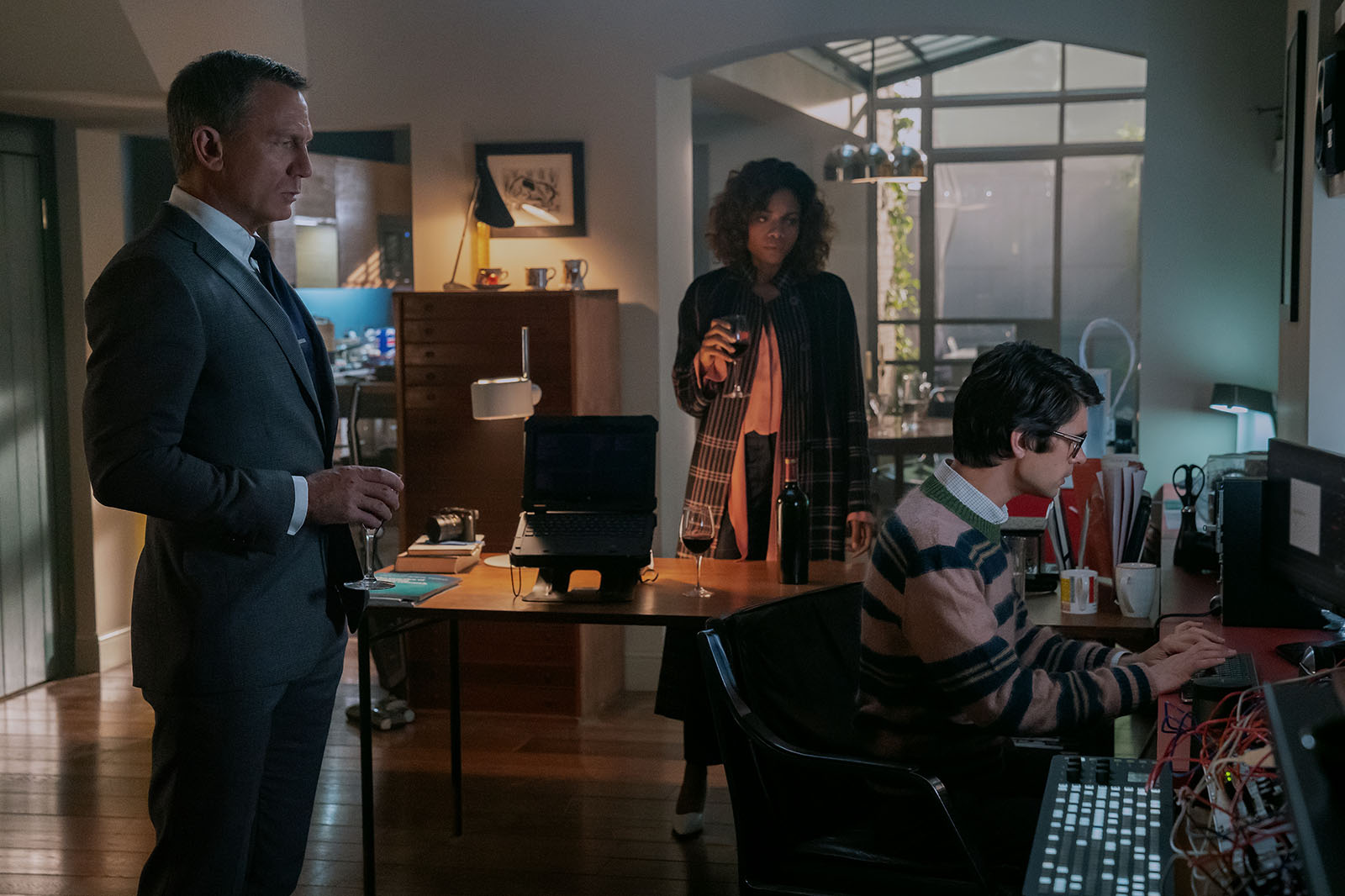
ANDERSON: We did a KEM roll, and I think Tom edits directly from the KEM roll, doesn’t he Martin?
CORBETT: Tom would then make his selects from the KEM roll. He’s got some fancy buttons—he’ll mark his in and outs, and then just hit a button. Then it basically make a roll of that.
ANDERSON: Elliot, I believe, used to put his select markers directly on the clips themselves; he would go through and put markers throughout the clips.
HULLFISH: I’m assuming that there was a dailies lab of some kind. What did they do? And what was the delivery like from them?
CORBETT: There were a few dailies labs. So obviously, we have the 65mm now and then 35mm as well, and when the shoot started off, it was predominantly 65mm for the Norway shoots. So that was processed by Cinelab. Then that would then go to Final Frame, who would then produce 2K dailies for us. That would then be sent to Company 3, who would then process our dailies.

Say they started shooting on Monday in Norway. We got that footage Thursday or Friday in editorial . One thing we ended up having to do quite a lot, especially with the 65mm when they’re on location in Jamaica and even Norway, was we’d have to bring in the video assist’s footage, and then both Tom and Elliot would cut with that and then show Cary something. Then two days later, we’d get the actual dailies.
HULLFISH: How did you sync up that footage? Was there some kind of metadata with the tap, or did you have to eye-match it?
ANDERSON: It was a lot of eye-matching.
CORBETT: Yes, we had to eye match basically every cut.
HULLFISH: On a film as big as No Time To Die, I’m assuming there was a VFX editor?
ANDERSON: We had a fabulous VFX editor, really we had a big team, but specifically, we had a VFX editor Billy Campbell who was on it right from the beginning.
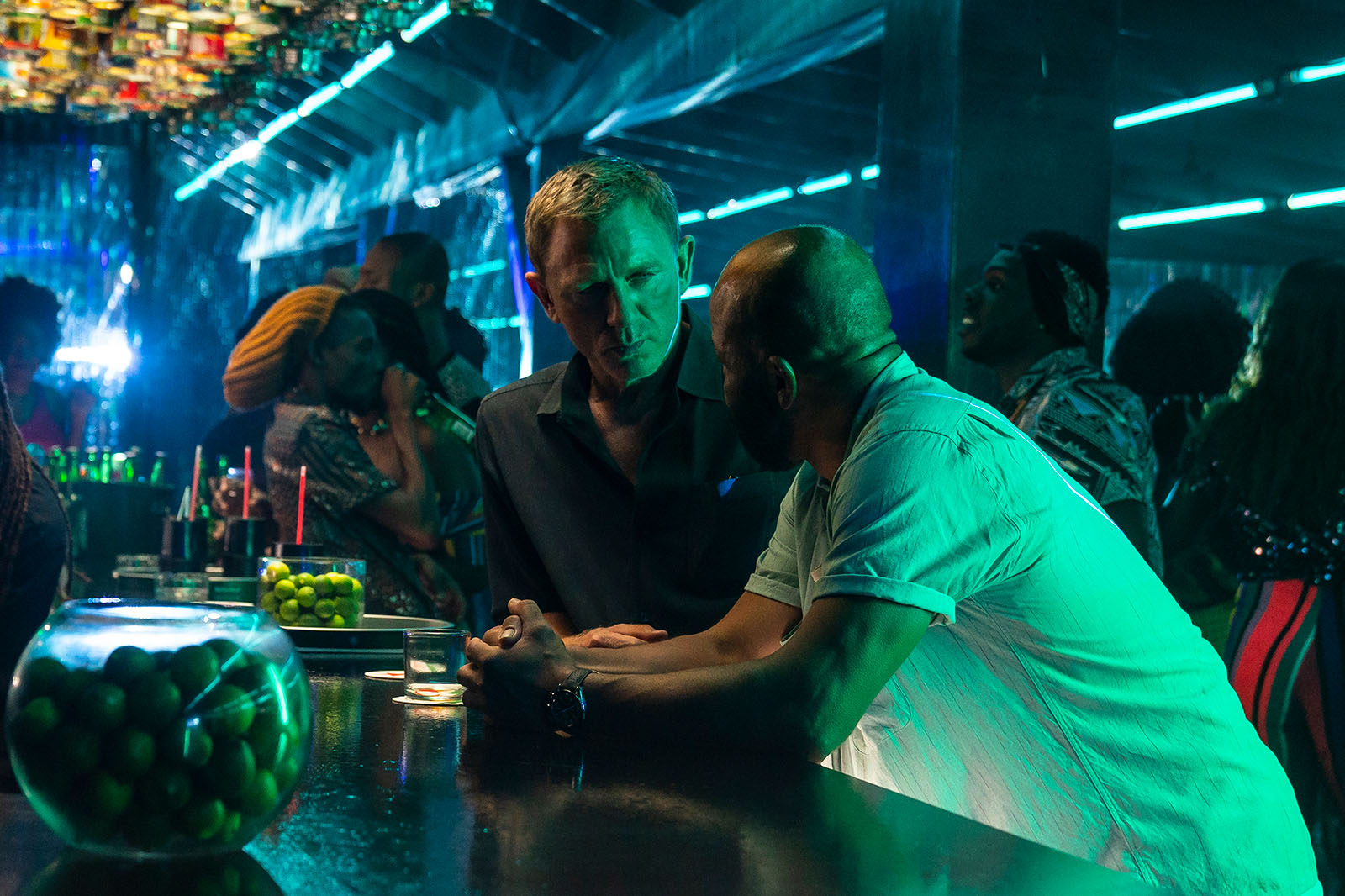
CORBETT: Billy started before us, he started after Christmas, and then we started in March because there were a lot of tests with regard to the 65mm.
ANDERSON: And they were pre-vising some of the big stunt-heavy scenes, so he was in from the beginning.
HULLFISH: What are the things that you two needed to coordinate with the other departments?
ANDERSON: On a daily basis, obviously, it was dealing with production and the shoot. We had a lot of interaction, particularly Martin, and a lot of interaction with the production and also video assist with getting the video tap.
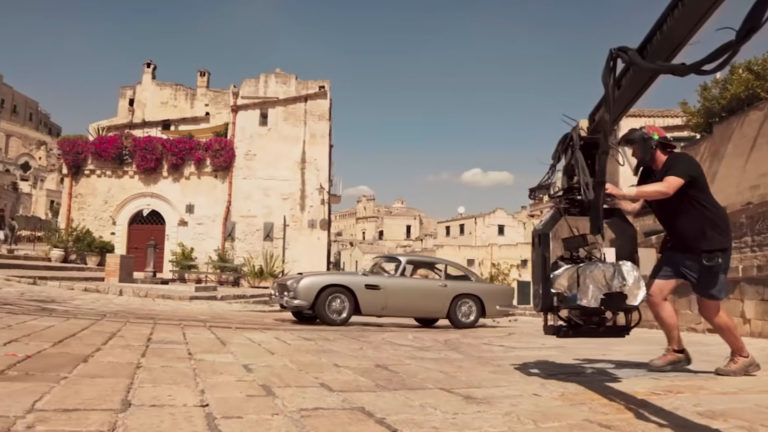
A lot of it was talking to production every day about where everything was being shipped constantly, especially when we were doing the stuff on locations and then all the stunt-heavy stuff; we were liaising a lot with the stunts team and then VFX to get pre-vis and some of the heavy stunt scenes before we were going to shoot them.
CORBETT: A lot of the shoot was done at Pinewood Studios, where you’re always having the cameras, departments, art departments, everybody pops in, we will pop over to set with Tom and with Elliot to show Cary cuts.
HULLFISH: Before I leave that idea of the VFX editing. I want to know more about VFX in the timeline. Is there timeline management for VFX?
ANDERSON: We definitely developed that as we went along. We had a VFX titles layer and a new VFX layer, and as it went along, whenever we got new VFX, they were put on the new VFX layer, and the editors would go through and eyeball them, and they would drop them down.
HULLFISH: Could you and the VFX editor not drop them down because the editors were approving something and deciding what could be seen?
ANDERSON: Yeah, it was more so that they had a chance to see it even though they probably would have seen it previously in a VFX review. Oftentimes they would tell us they have seen it all and that it was okay to drop it down, or they would tell us to hold off so that they could go through them first.
HULLFISH: Can you tell me what exactly was the size and the compression in Avid that you guys were working at?
CORBETT: We used DNxHD 115 in the Avid. Obviously, the 65mm, we had the 1:43 ratio, and then obviously 35mm was scope. We decided we would view that to 65mm in 1:90 and then the 35mm in 2:40.
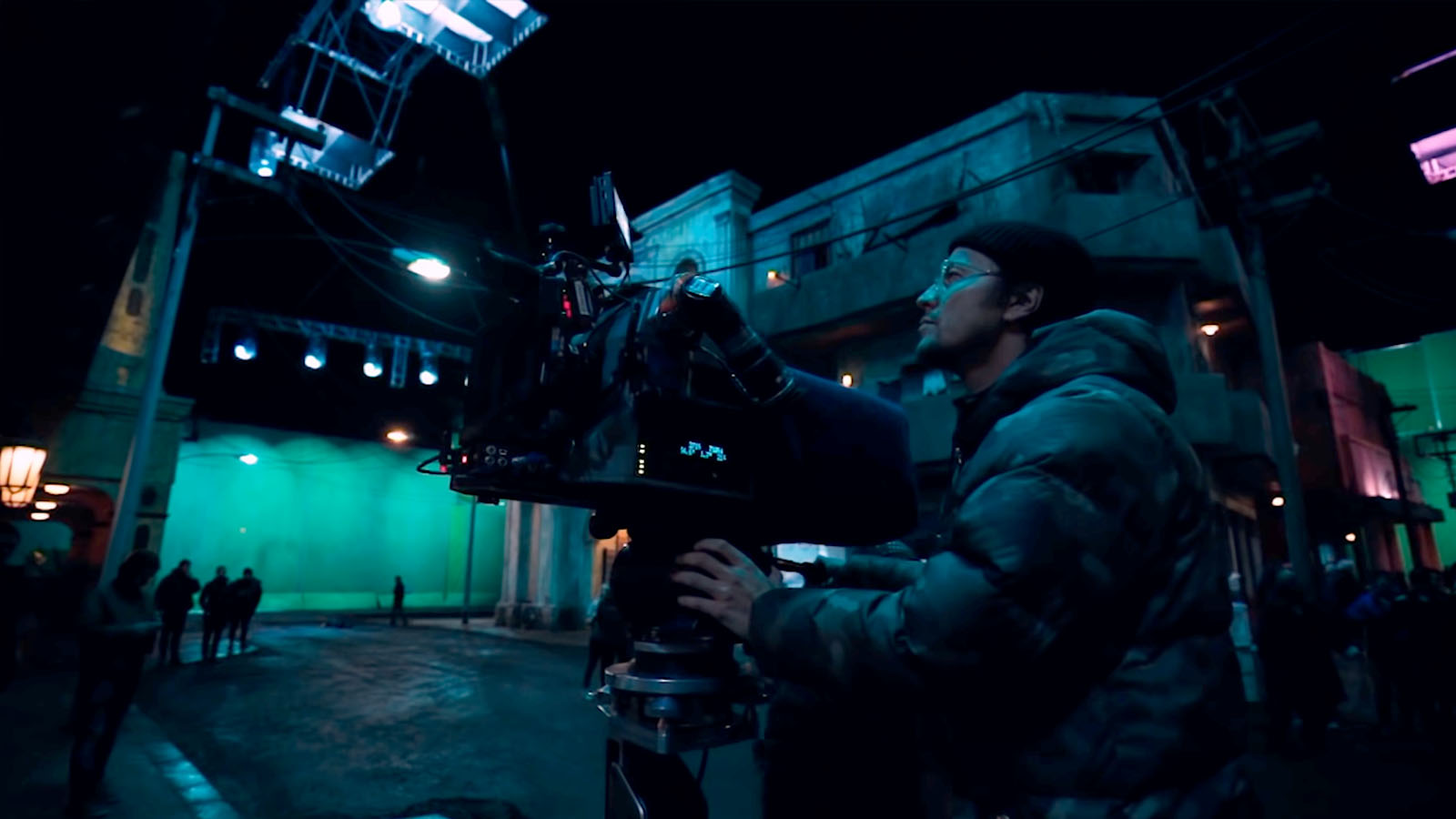
So the whole opening was shot 65mm, either 1:43 or 1:90, and then as we go into the title, that’s when it opens up to 2:40.
HULLFISH: How did you guys listen to the audio in the edit suites? Was it stereo, LCR, 5.1?
ANDERSON: We worked in 5.1 that was a decision based on, I believe, Elliot, who had worked in 5.1 before. I feel a lot of cutting rooms are at the moment steering towards working in 5.1, and Tom was extremely open to doing that, so we worked in 5.1 from the beginning.
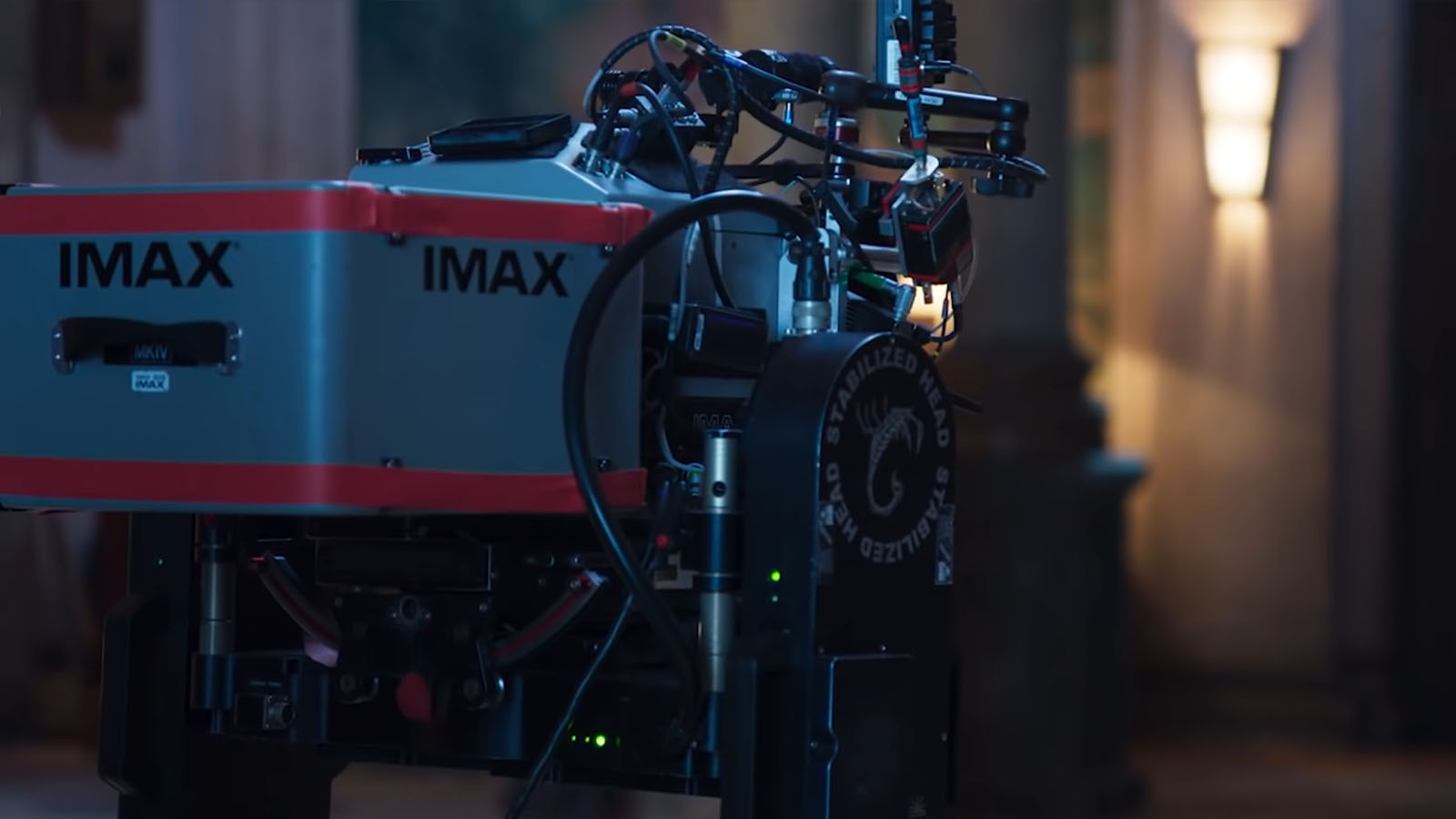
HULLFISH: What kind of creative things did you guys get a chance to do on the film?
CORBETT: Very early on, we had a little sound work to do; I would say you had more to do in the creative category.
ANDERSON: I think we were definitely doing a lot of sound work for both editors from the beginning. Obviously, the balance between getting dailies done and doing the creative stuff during the shoot is a fine balance. Tom would hand over a lot of work to be done on his scenes, and then Elliot had me doing sound design on his scenes, or if I didn’t have the time, I’d pass them along straight to our sound department, who were designing them very early on.
We were also getting a lot of the pre-vis and stunt-vis for some of the scenes that were to be shots that we were massaging. I had to rework a lot of the pre-vis that would come back, and then we’d have to massage to the cut and some of the stunt-vis that was coming in, and it was a lot of back and forth in that sense. As we got into post-production, we started to temp ADR lines; it started to involve everybody, all of the assistants.
HULLFISH: With producers sometimes coming in to watch cuts, I’m assuming that was thoroughly vetted because editors are usually very protective of the director. Nothing gets shown to anybody other than Cary unless it’s vetted?
CORBETT: Cary would always know they were coming down. They didn’t just show up out of the blue. Cary was shooting, so they would come.
ANDERSON: I think as well when we were shooting it, it wasn’t so much to come over, to look at cuts but rather for planning upcoming shoots because we had so many moving pieces on this.
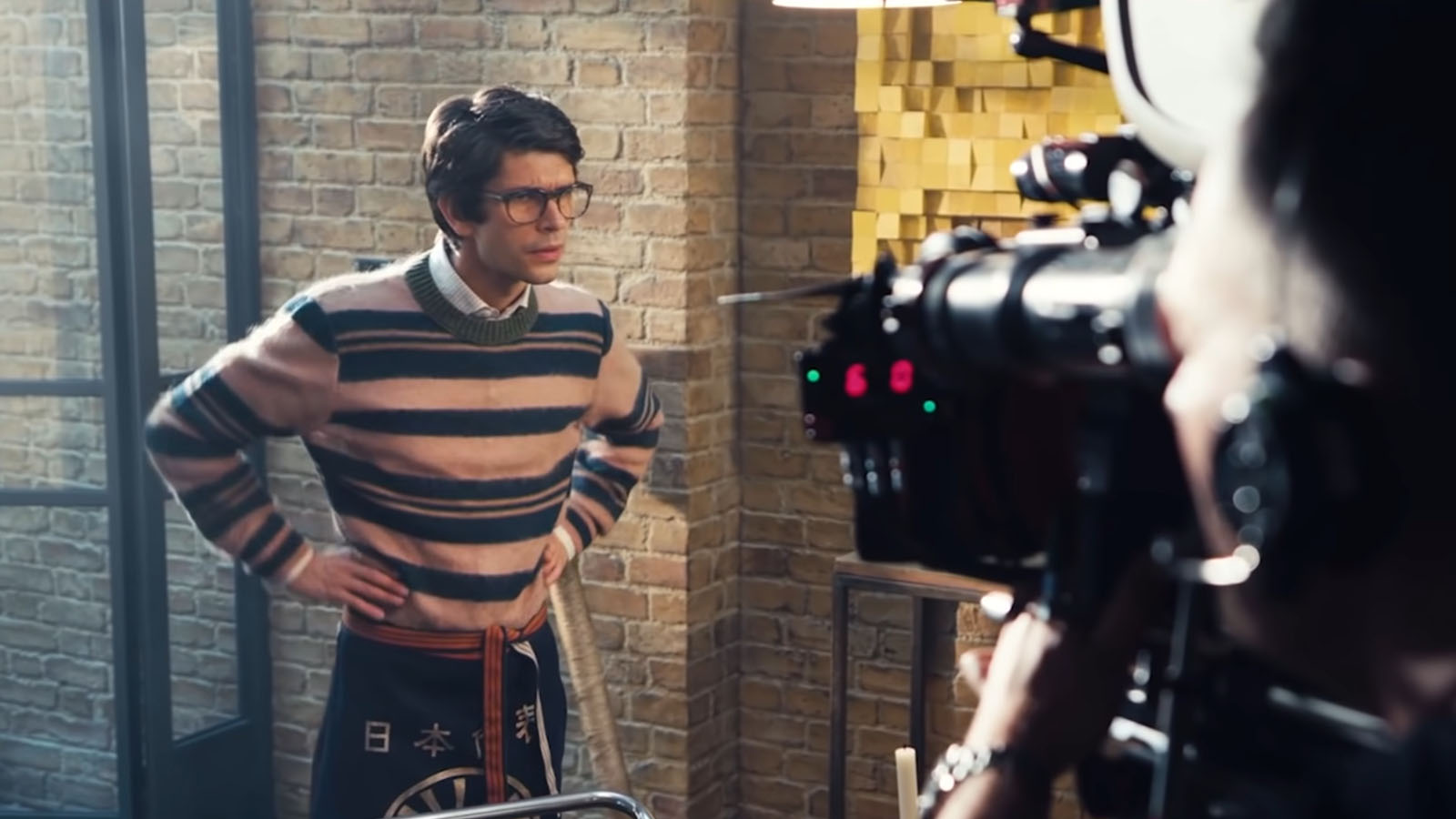
HULLFISH: What were some of your responsibilities at the end of the film to get stuff off to other departments?
CORBETT: We split that up; she would deal with sound, and then I would deal with picture as well as DI as well as the main title credit, and she would deal with sound and the ADR.
HULLFISH: What were some of the things you had to deal with sound that was going out and coming back.
ANDERSON: The schedule on this, now in hindsight, is kind of funny, but the schedule on this was quite tight, and we were racing to a deadline. So we had the sound department on very early; we did have one temp mix for what was meant to be a “friends and family” screening that didn’t actually come to fruition.
We were doing a lot of ADR, which became quite an intricate process. I was monitoring it daily because there were new ADR lines coming and going and then liaising with our dialogue editor, Becki Ponting, in regards to that. So that was a constant back and forth. I was managing that every day towards the end there.
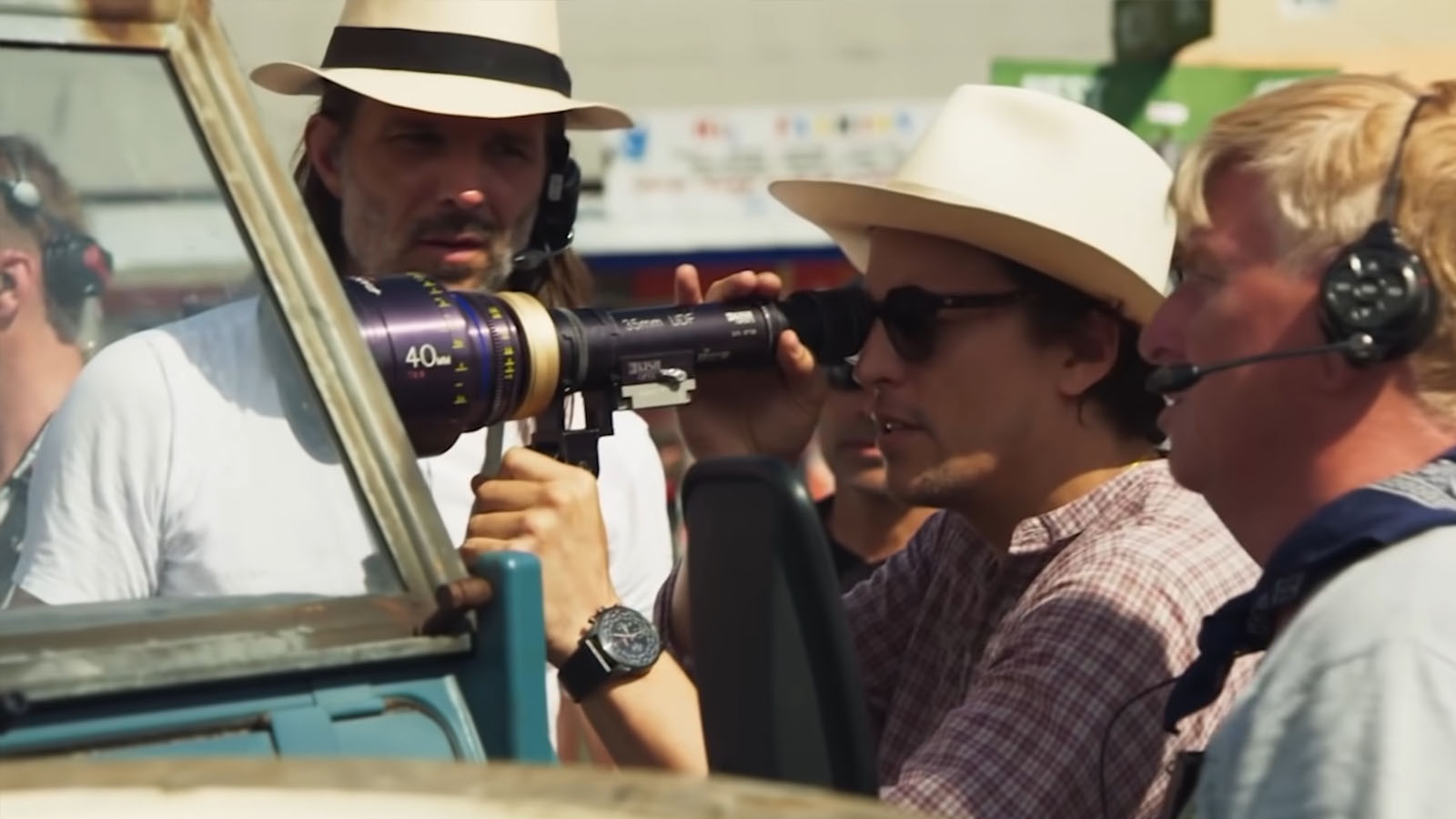
HULLFISH: Were you collaborating with the music editor as well?
ANDERSON: Yeah, he was based on the floor with us in Soho in London, so he had a room in our building on our floor so that Cary could come down to him if necessary to show him stuff, and vice versa he could come to the editors very easily and talk to them, which was great.
HULLFISH: In relation to the start of shooting, when did you two come on?
CORBETT: We started two or three weeks before the shoot.
HULLFISH: What were some of your responsibilities in those first few weeks?
CORBETT: To be honest, just working out the details. There were lots of calls and meetings about workflows. Billy Campbell, the effects editor, had been on since January, and they’d be doing tests and then figuring out what cameras they were going to use? When we started, nothing had been decided yet, but then those first few weeks, things were getting decided faster and faster.
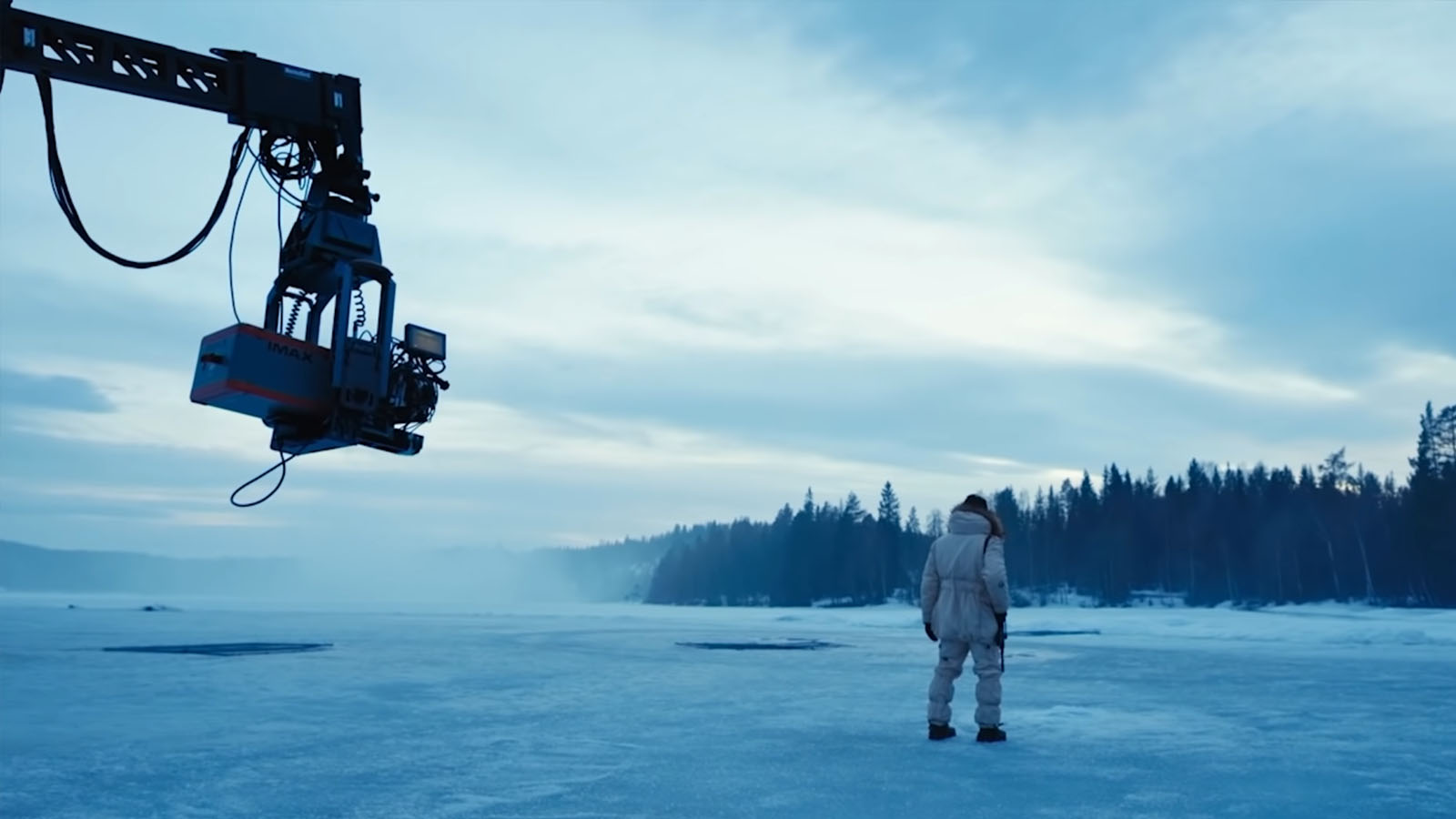
The reason they shot Norway first is that there is a scene on a frozen lake, and the ice was melting, so that’s why it was pushed up slightly so they could get the shoot done before the ice melts.
ANDERSON: In the beginning, there was a lot of designing the workflow of where the rushes [dailies] were going to be, how they were going to get to us, in what time frame, and who needed to know. We spent those first couple of weeks designing these workflows. Tracking the footage on its various stops along the way until it gets to us.
Another thing we did was set up the cutting rooms for the editors. Those beginning few weeks are so important to editorial because as soon as the shoot starts, we hit the ground running. We want to make sure that physically speaking the cutting room is in such a place that everyone’s happy, everyone’s comfortable, each room had the sound calibrated and the lights set up in the exact way they want, that everyone’s got a sofa and a desk and all that stuff so that we are ready to go when filming starts.
HULLFISH: I heard that you brought in the previous movies into the Avid.
CORBETT: Yeah, that was something from Tom and just sitting down and chatting together. We also brought in all the soundtracks as well for every movie, which is really a lovely thing. When you look in the projects and then open that folder, and it’s all the same tracks we had, like this sort of split stems from Daniel Craig’s movies. So they could actually use the sound effects.
HULLFISH: Thank you so much for chatting with me and giving me some time today. Congratulations on a very impressive project.
ANDERSON: Thank you.
CORBETT: Yeah. I hope you enjoy the film when you see it.

